Today we will walk through the bunker, which at one time served as a shelter for the house of the Council of Ministers, and later was converted into a reserve protective structure of the Ministry of Education and Science. Ironically, now his state, like the state of education and science, leaves much to be desired.

Once inside in the case of the "P" hour, the minister is unlikely to be very happy. However, despite this, some special atmosphere of the greatness of the Soviet Union was preserved in the shelter.

To avoid uninvited guests, resourceful engineers cut a massive lever lock into the plump yellow steel doors, but this did not become a strong hindrance for us, and we mysteriously found ourselves inside.
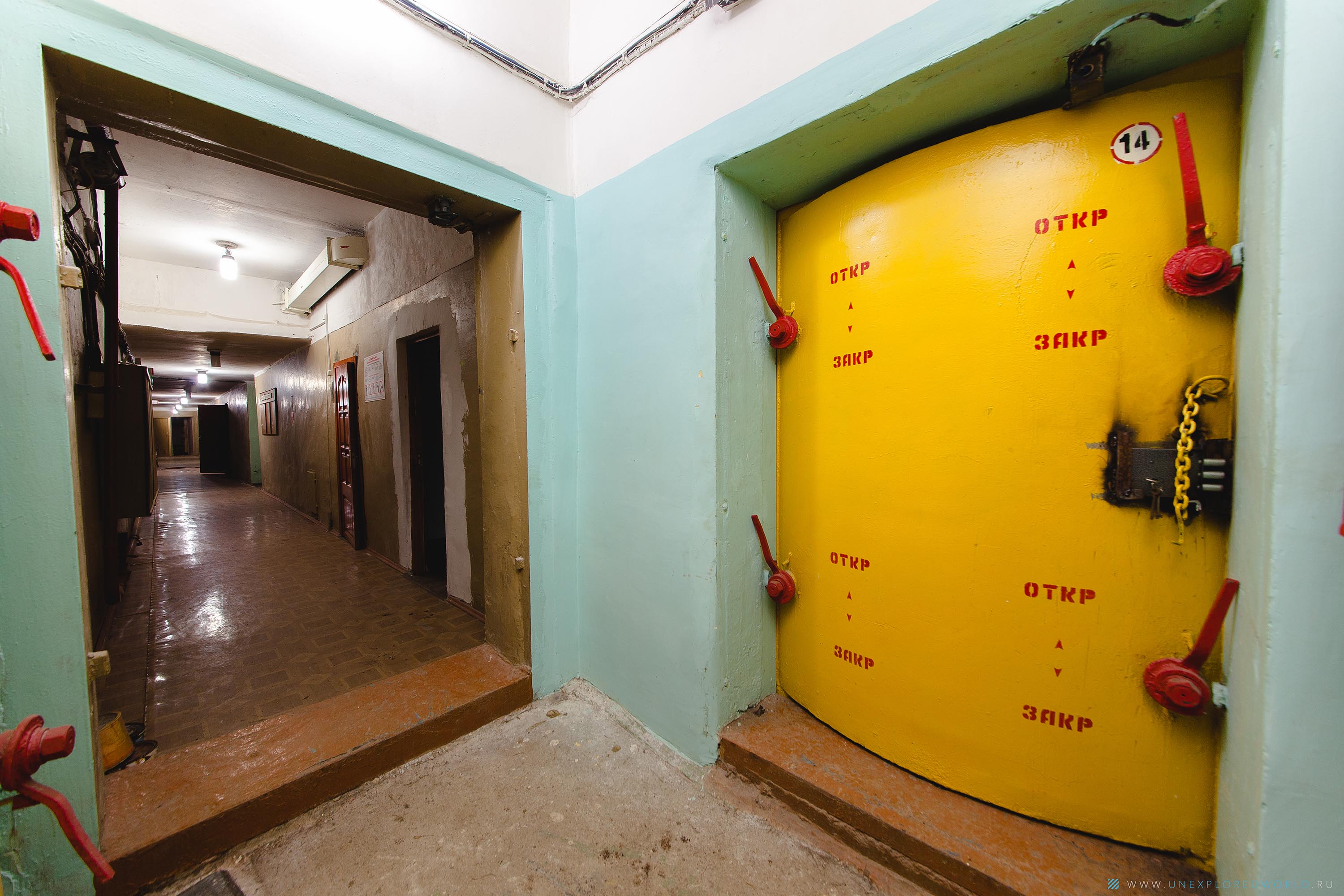
When we climbed into this bunker, none of the participants in the trip even knew about its alternate destination. The reason is very simple - absolutely no hints at the attitude of the object to any department, not to mention the Ministry of Education and Science.

The first surprise awaited us right at the entrance to the facility, in the room on duty. Extremely interesting rooms were marked on the plan: the state secret protection department, the minister's office. Surprised by the find, we immediately ran to see what the minister's office looked like.
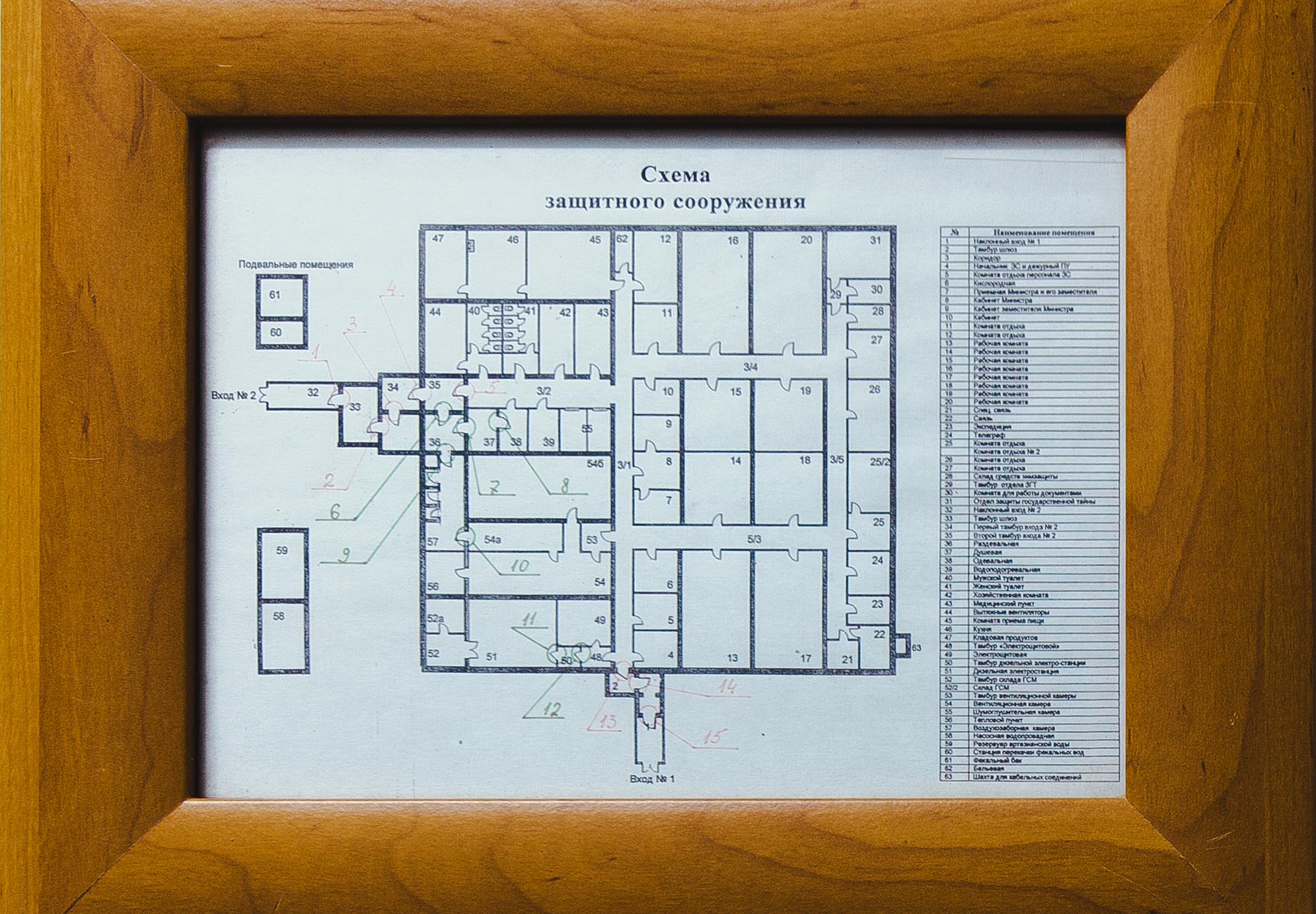
Keys to all rooms:
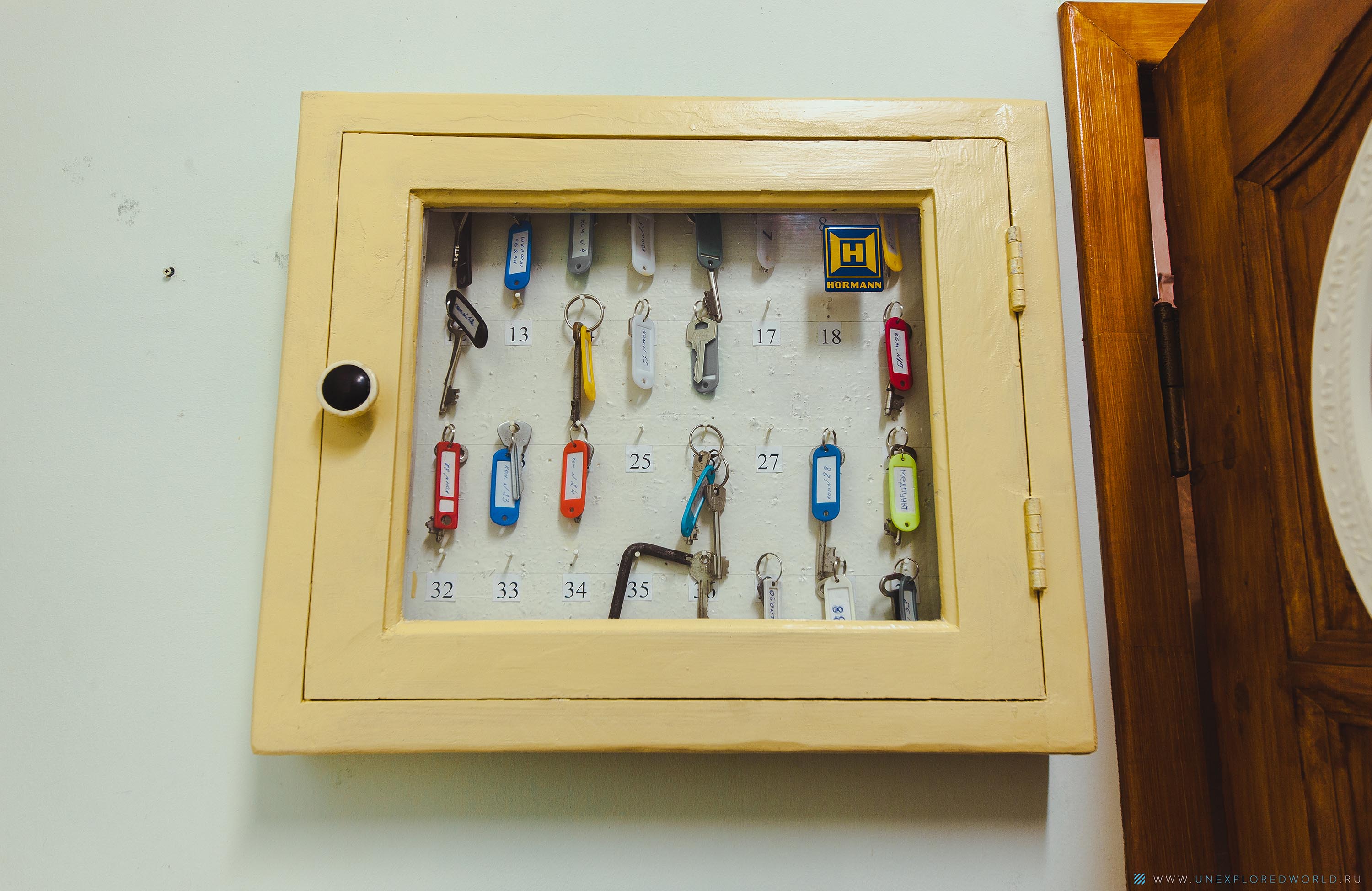
Well, we will start our walk with you with the engineering systems of the facility, leaving the most interesting for later.
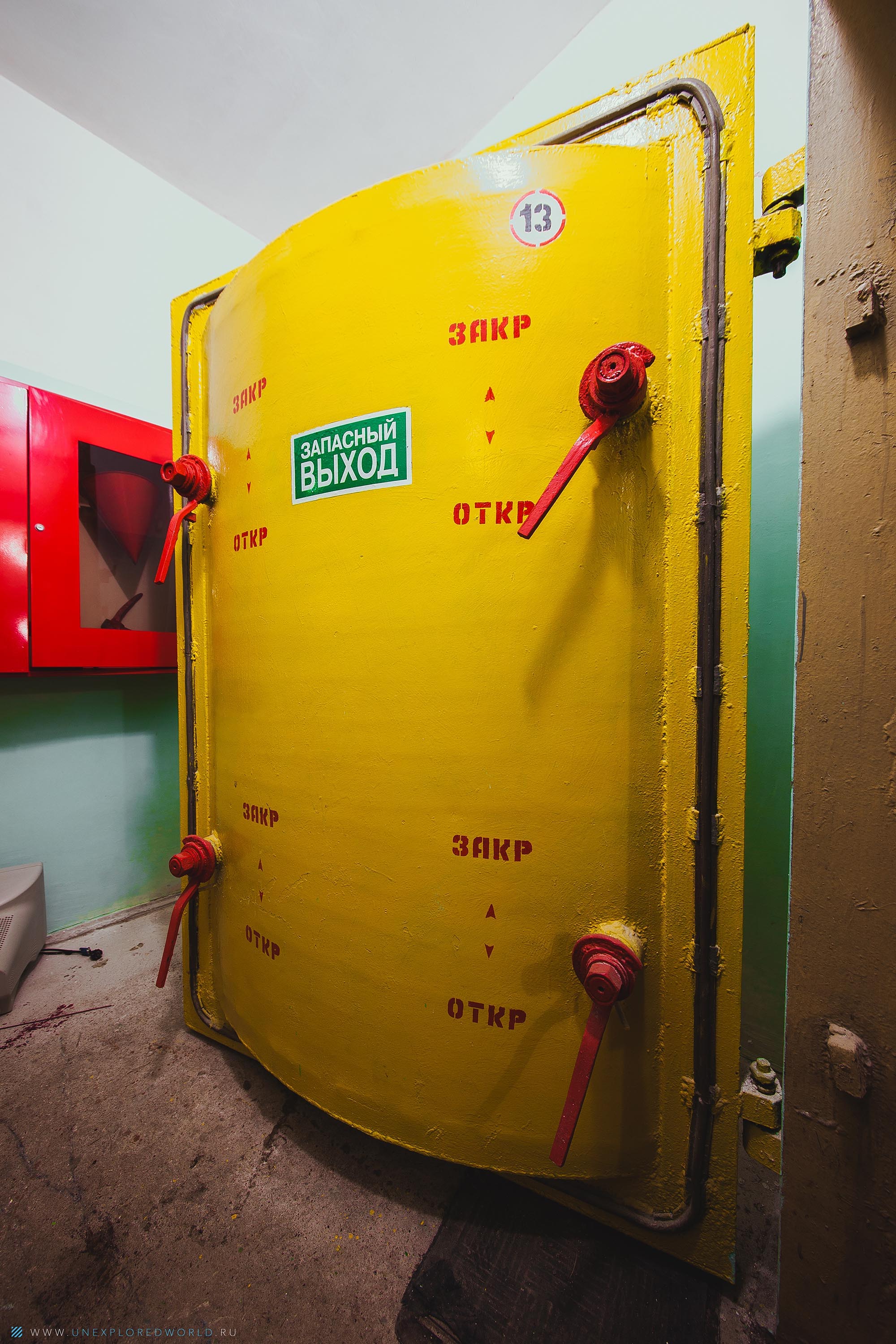
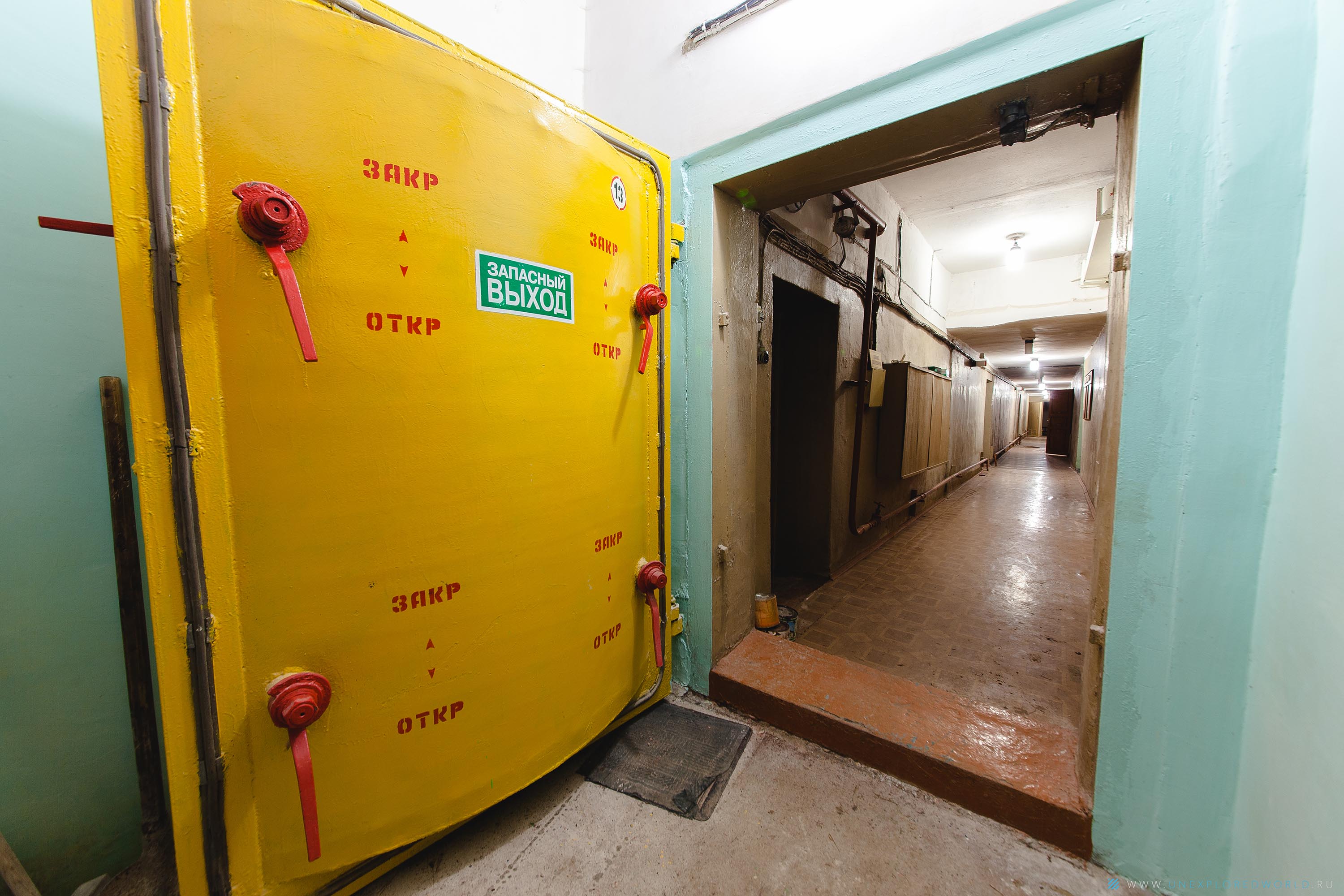
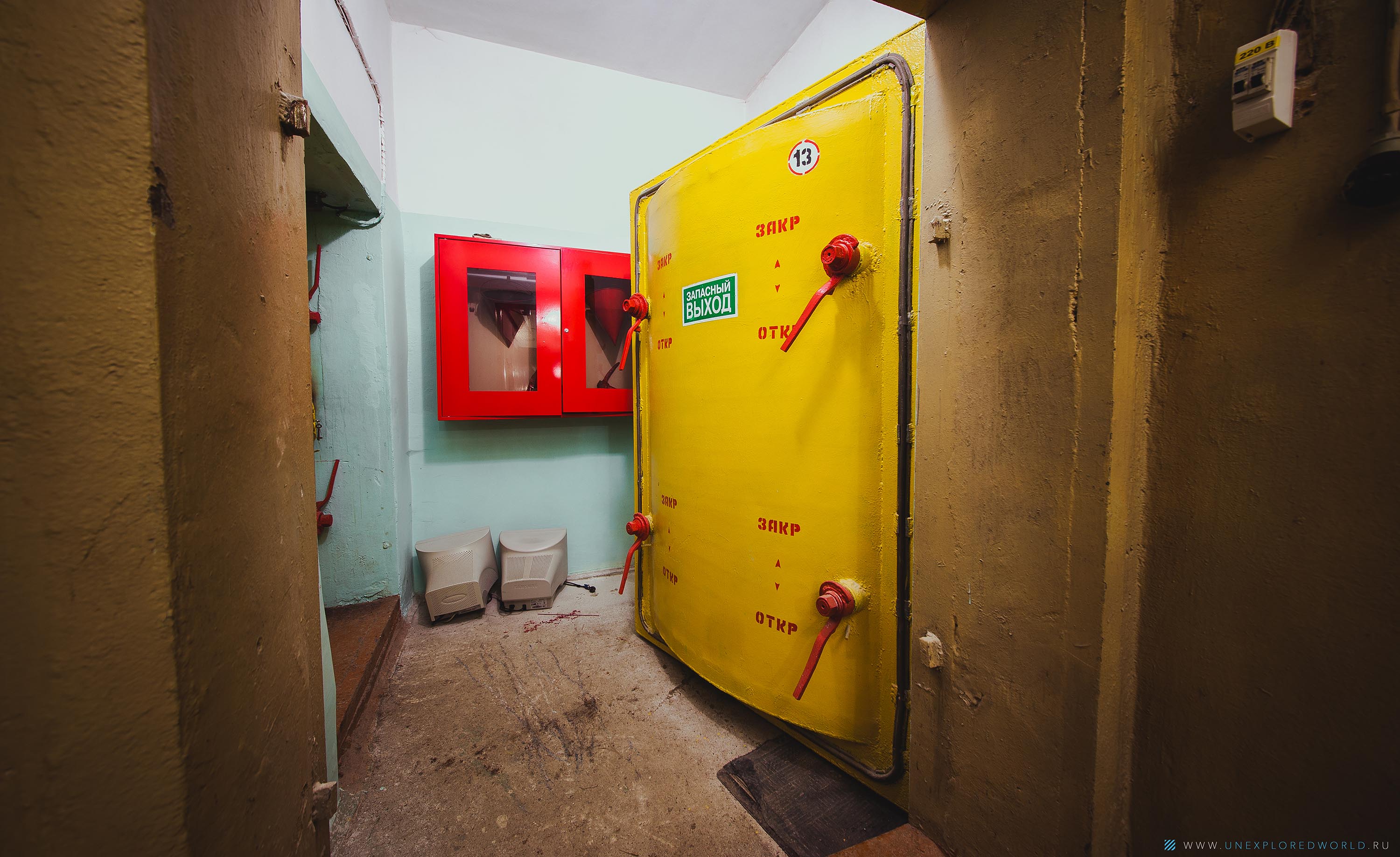
This is how a diesel power plant looks like, which, if the bunker is disconnected from the main power source, must provide the facility with electricity.
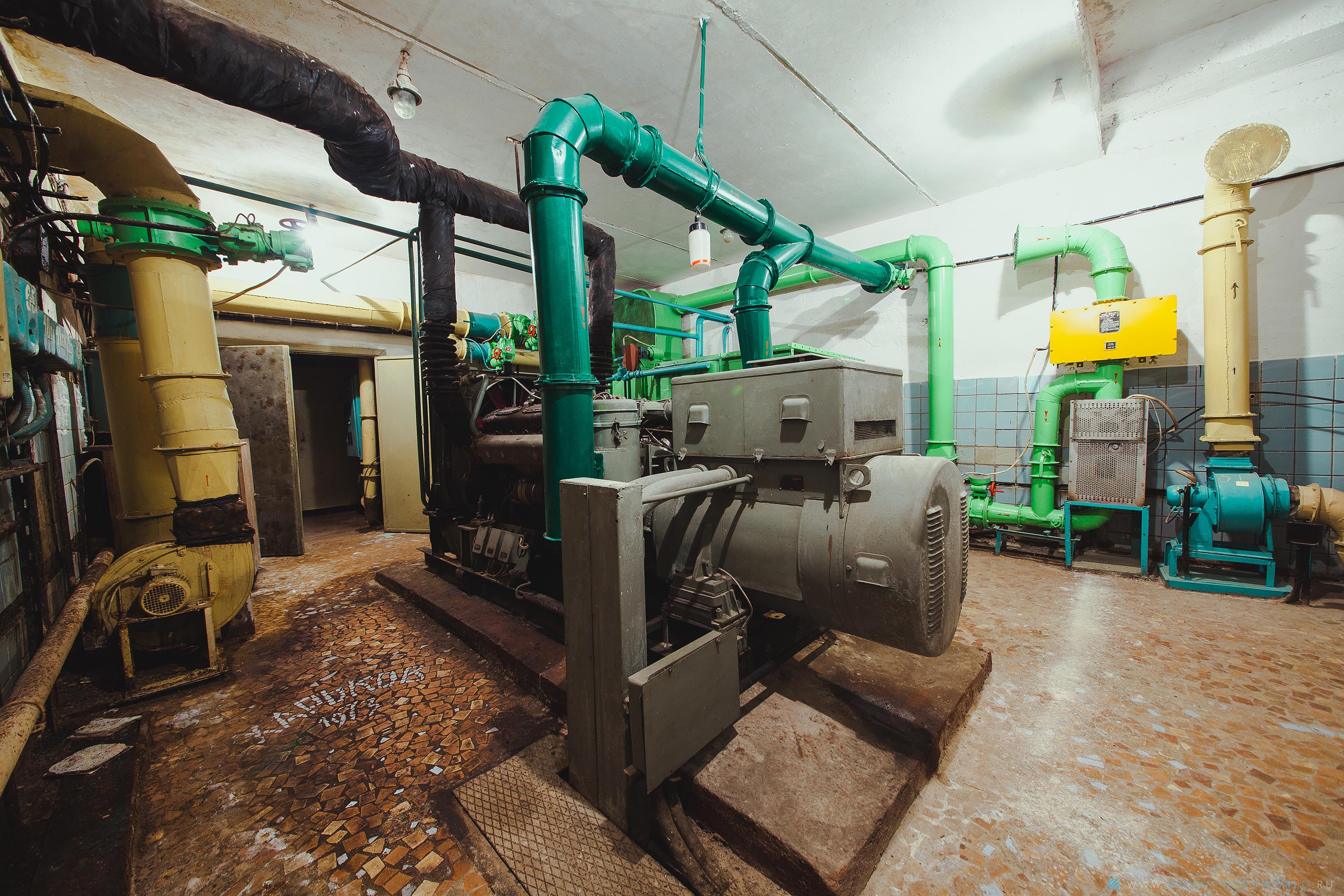
In rooms with brightly painted interior items, the cameraman literally freaked out from what was happening and diligently brought down the white balance, so some of the photos go green.
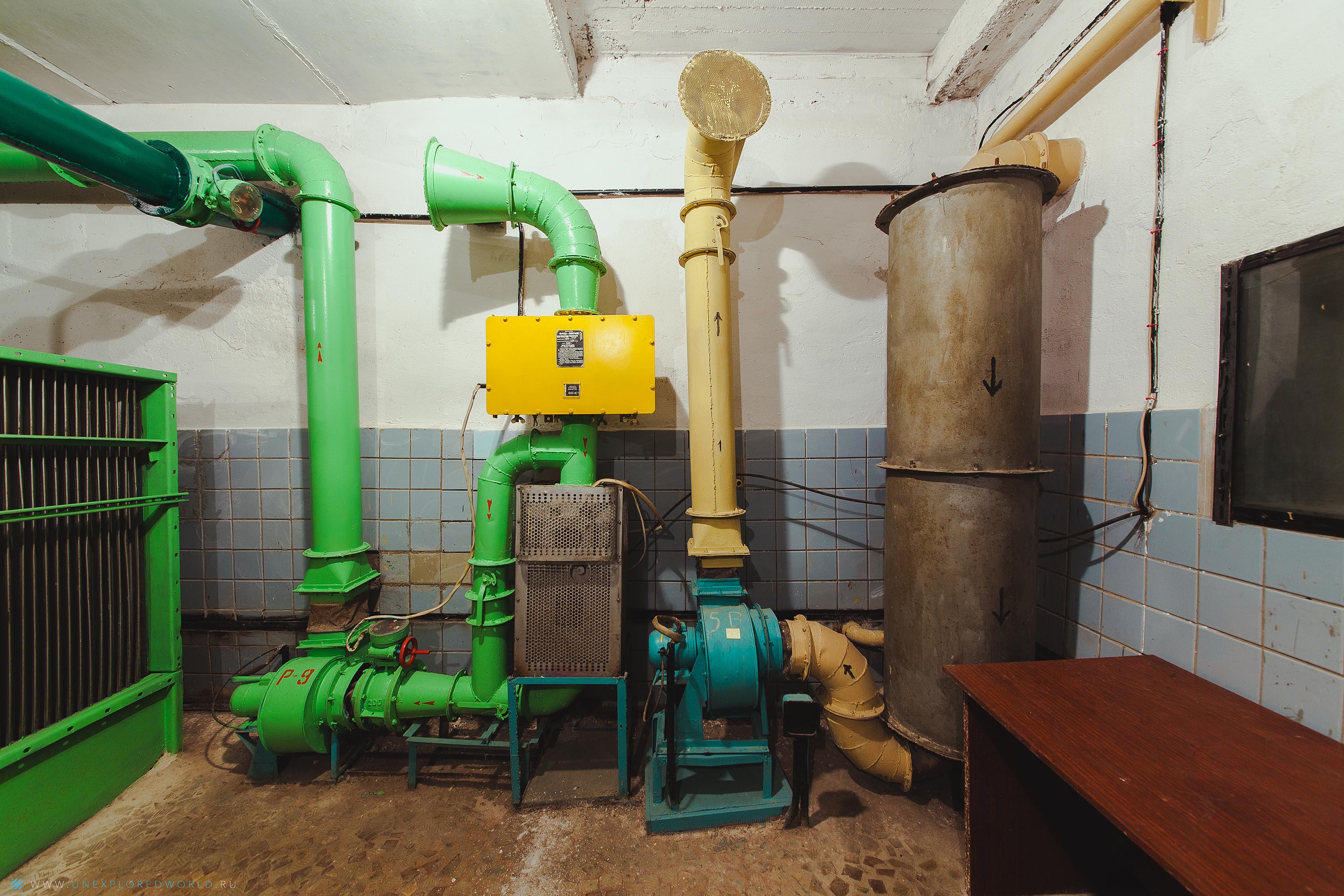
A very interesting inscription is laid out on the floor in the diesel one: "Kharkov 1973". Apparently, the bunker was built with the participation of Ukrainian colleagues in 73! An unusual find.

I wonder how the pump interferes with the work of people?

We leave the diesel engine through these two green doors and in the vestibule we see a very unusual thing
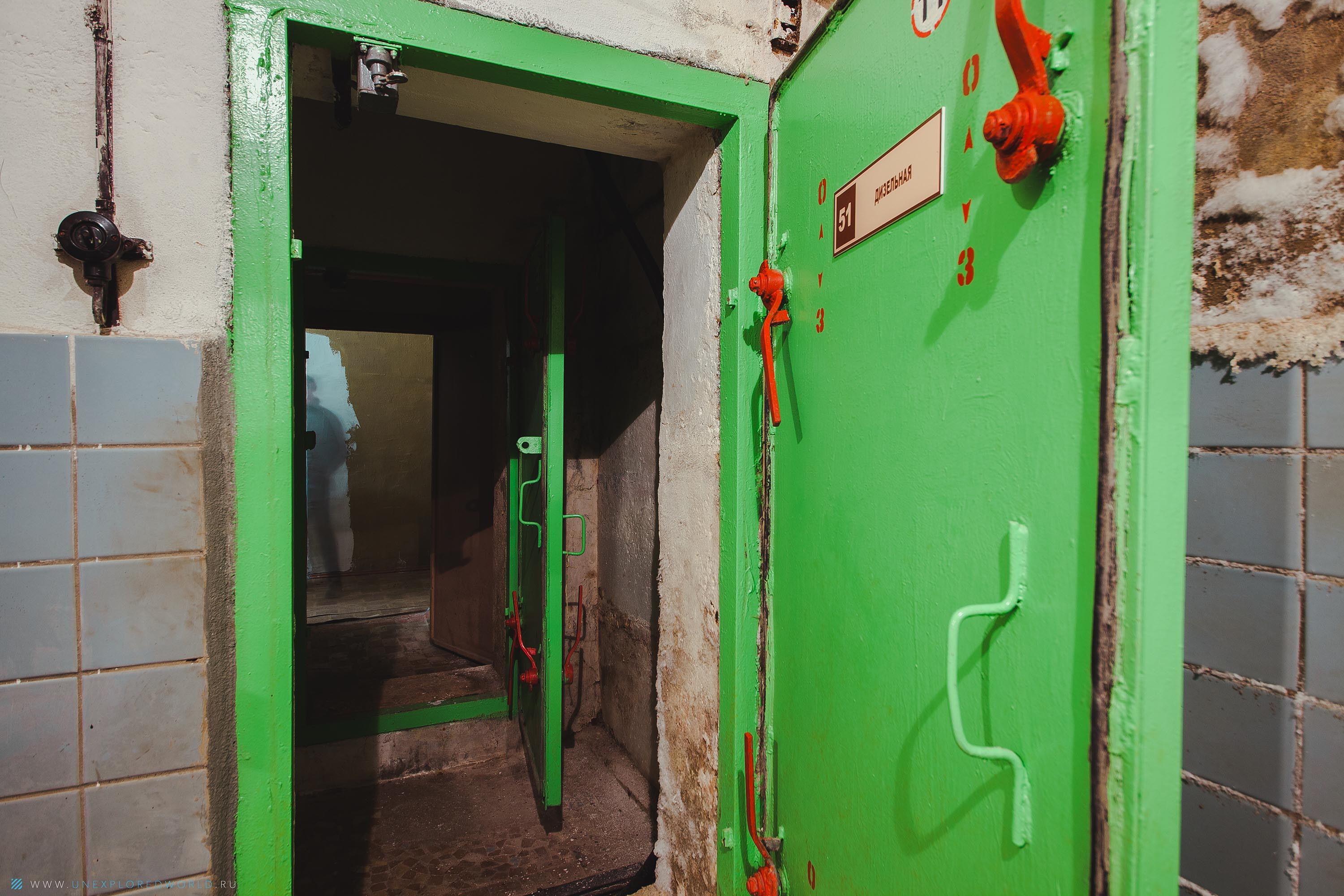
This object has one interesting design that we have not met before: a glazed hermetic hatch in the DPP room. Apparently, this was done in case of a diesel generator accident, so that the sheltered could safely assess the consequences for themselves.
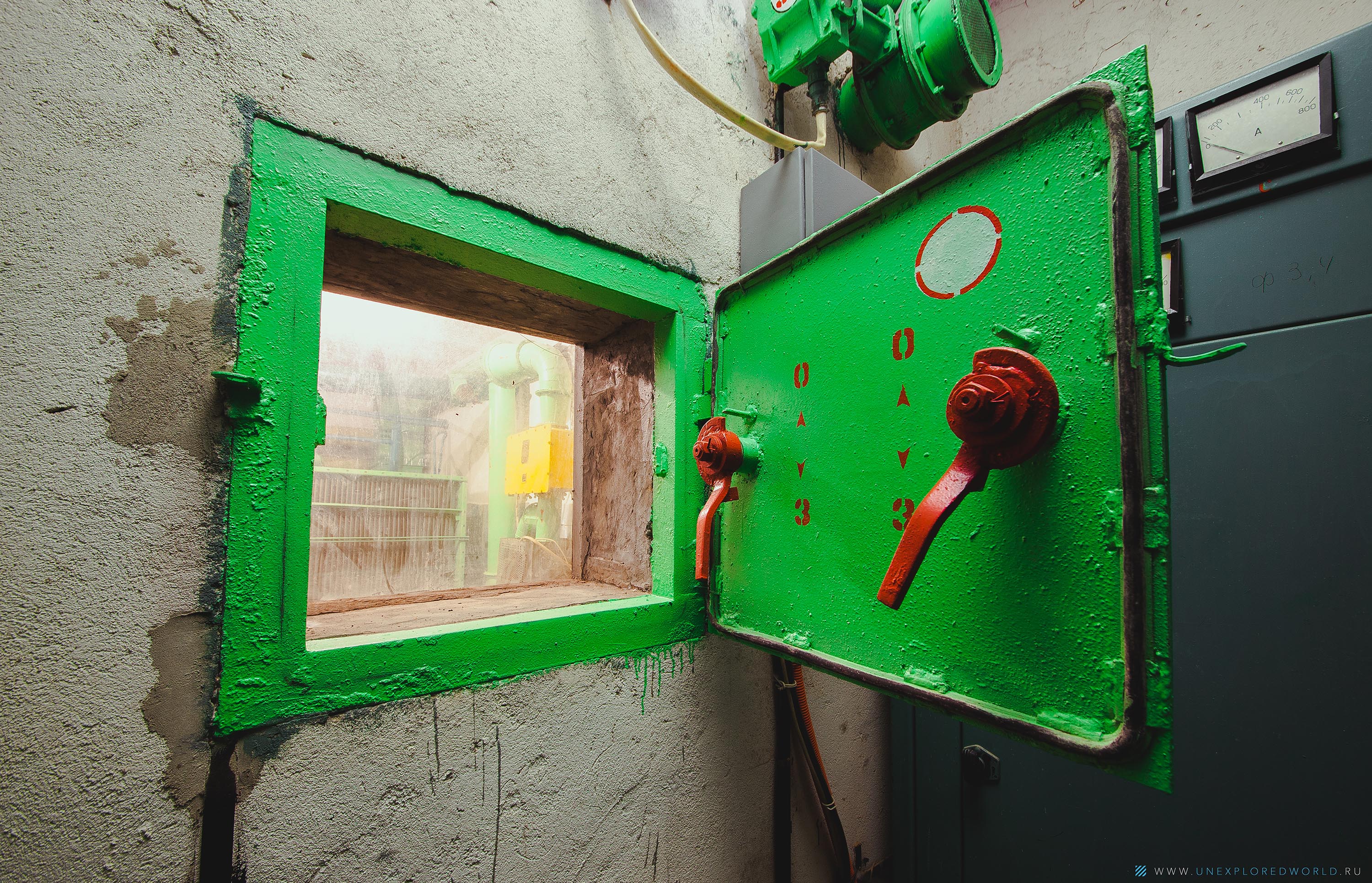
Electricity control panels from the diesel power plant (and, possibly, from the external power supply of the bunker)

The plump yellow doors look very tart and nice.
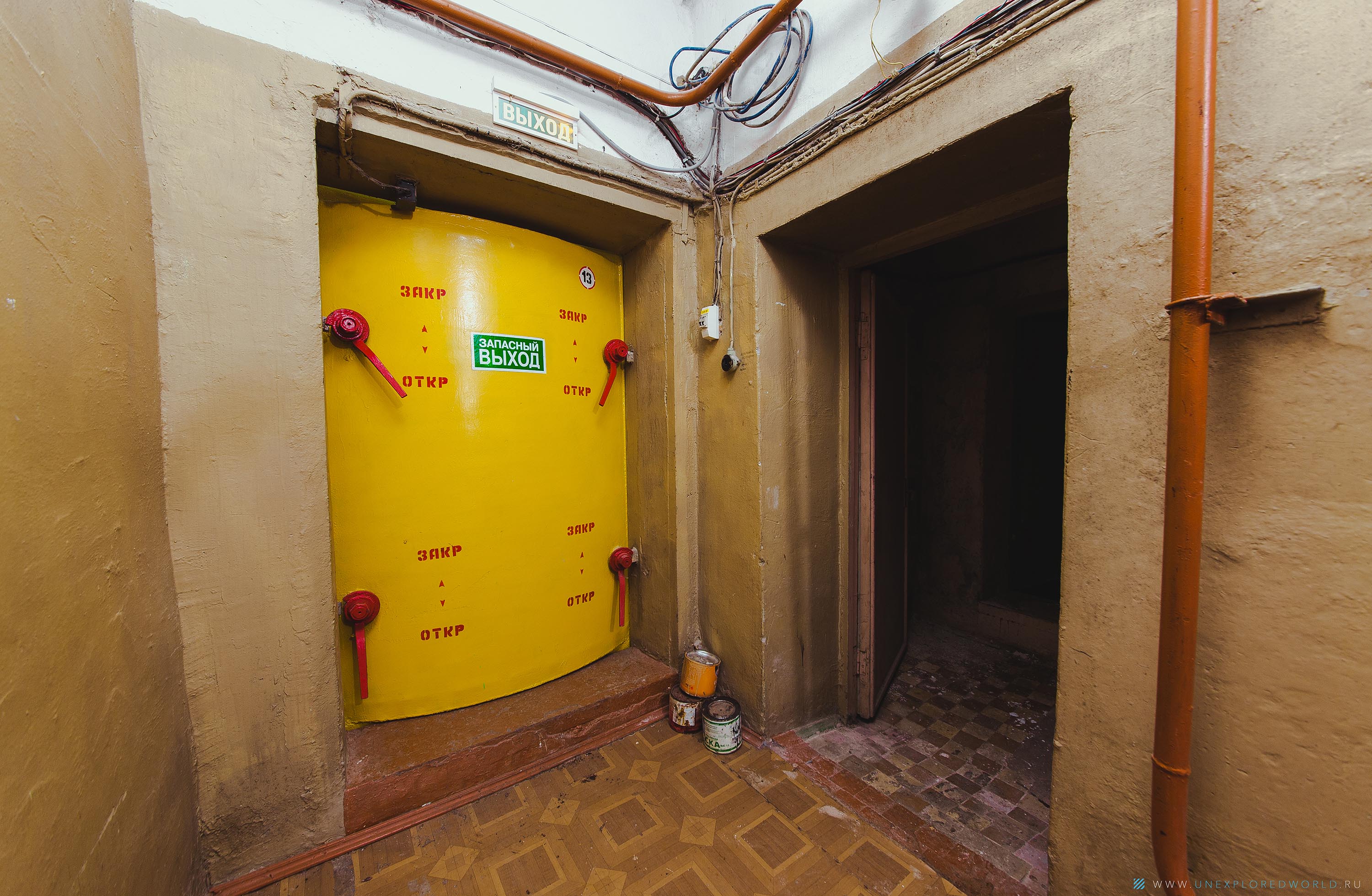
Do not forget that the facility is more military than civilian. This is reminiscent of the color of the pressurized doors (markings that are standard in a military defensive structure), as well as the order board located on the wall.

In the filter and ventilation room, in addition to standard air filtering units, there are also compressed air cylinders. They are able to provide the bunker with oxygen for some time in the event of a malfunction of the HFD.

Oxygen
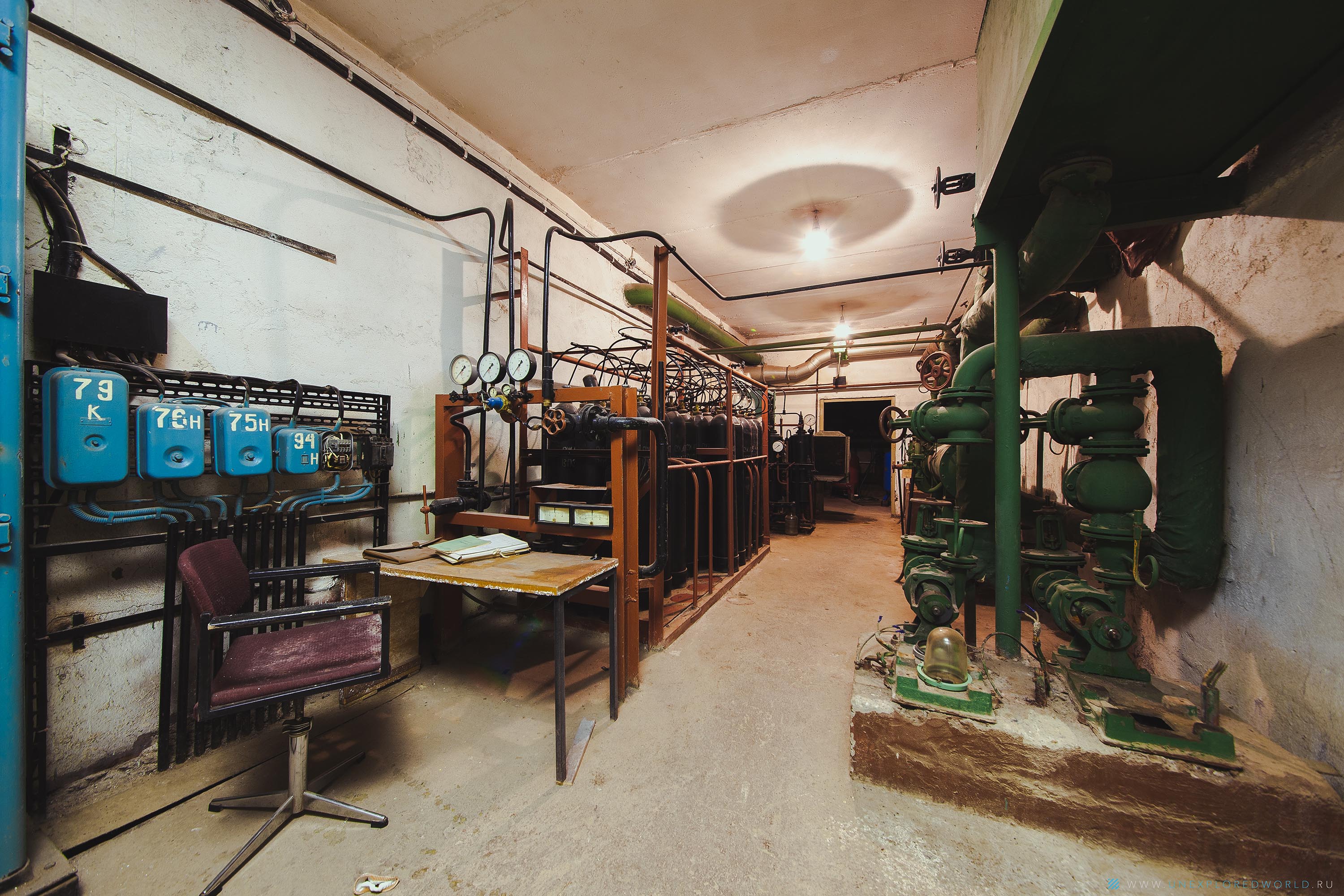
Numerous compressed air cylinders

Pressure gauges

And here are the HLFs themselves, which can be found in any normal protective structure.
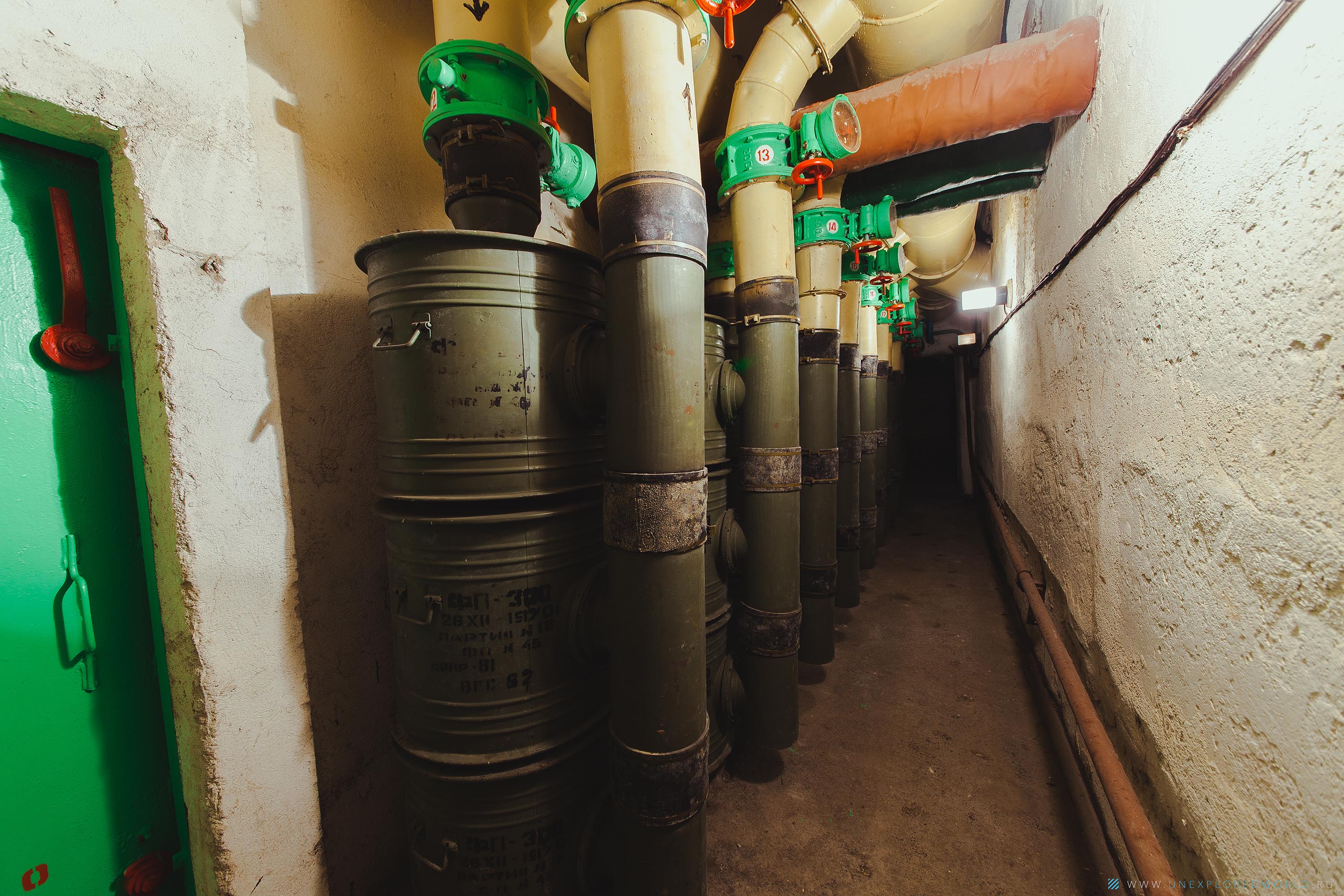
In this room, lamps created a rather tense atmosphere. The fact is that one of them extremely creeps blinked. Apparently, due to some kind of power outage. HLF:

More FVU:

And more FVU:
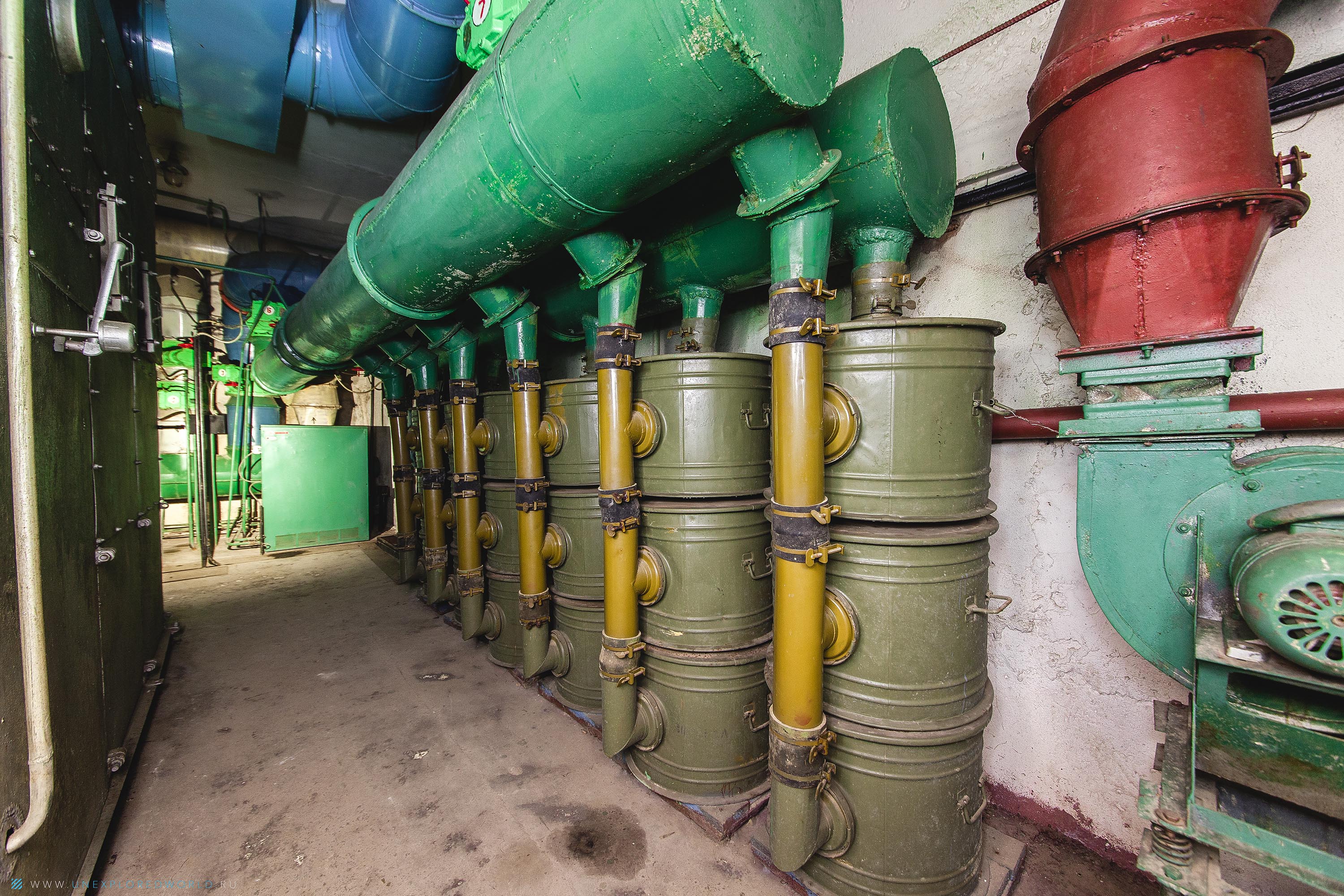
All ventilation in the facility is controlled using one large control panel, which looks more like a ship's equipment, a kind of captain's bridge in the bunker:

Looks pretty serious:
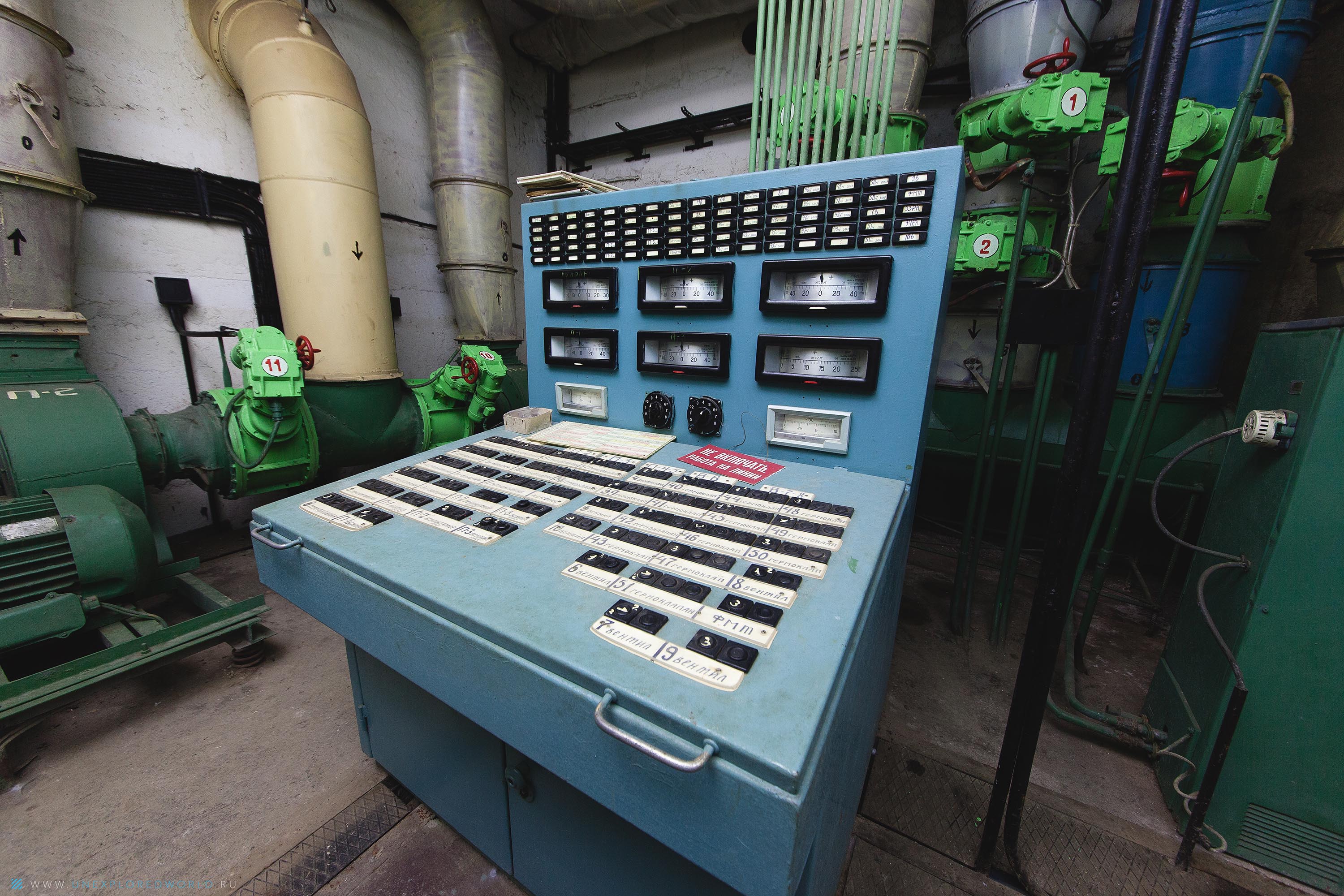
What else is atypical for defensive structures is a double airlock with three pressurized doors. Usually in defensive structures, two doors are sufficient, forming one gateway, but when it comes to the bunker of the Council of Ministers, things are a little different. However, if a double airlock can still be found somewhere, and you are unlikely to surprise anyone with this, then the following picture does not lend itself to imagination. At the second entrance to the facility there are SIX airlock compartments with 9 pressurized doors! How do you like that, Elon Musk? Do not believe me - look at the diagram (above), all the hermetic doors are marked on it.
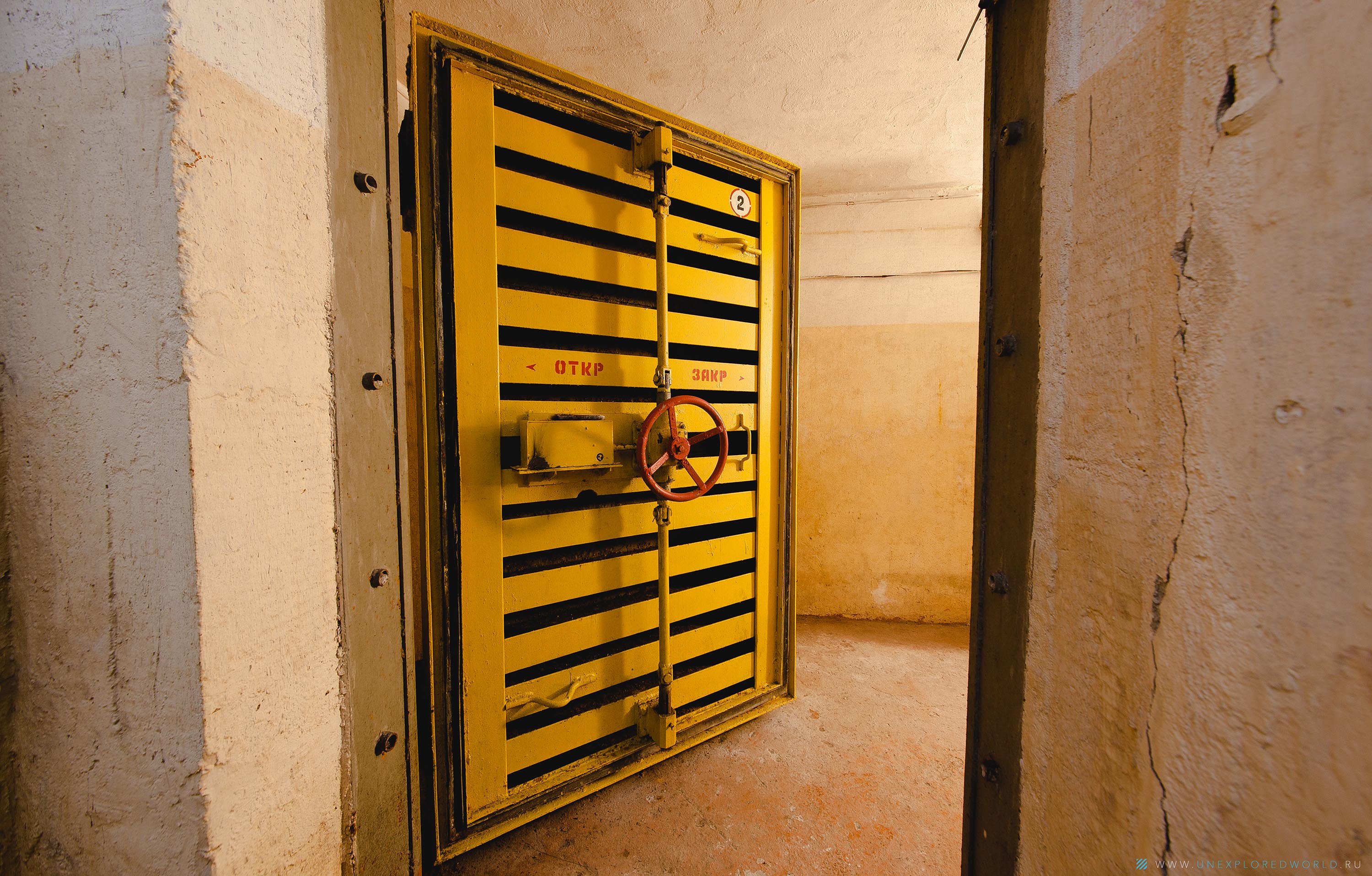
It works as follows: after having passed four hermotambours, you find yourself in front of a choice: open the last hermetic door (on the left) and be in the object, or go through two more vestibules to take a shower.
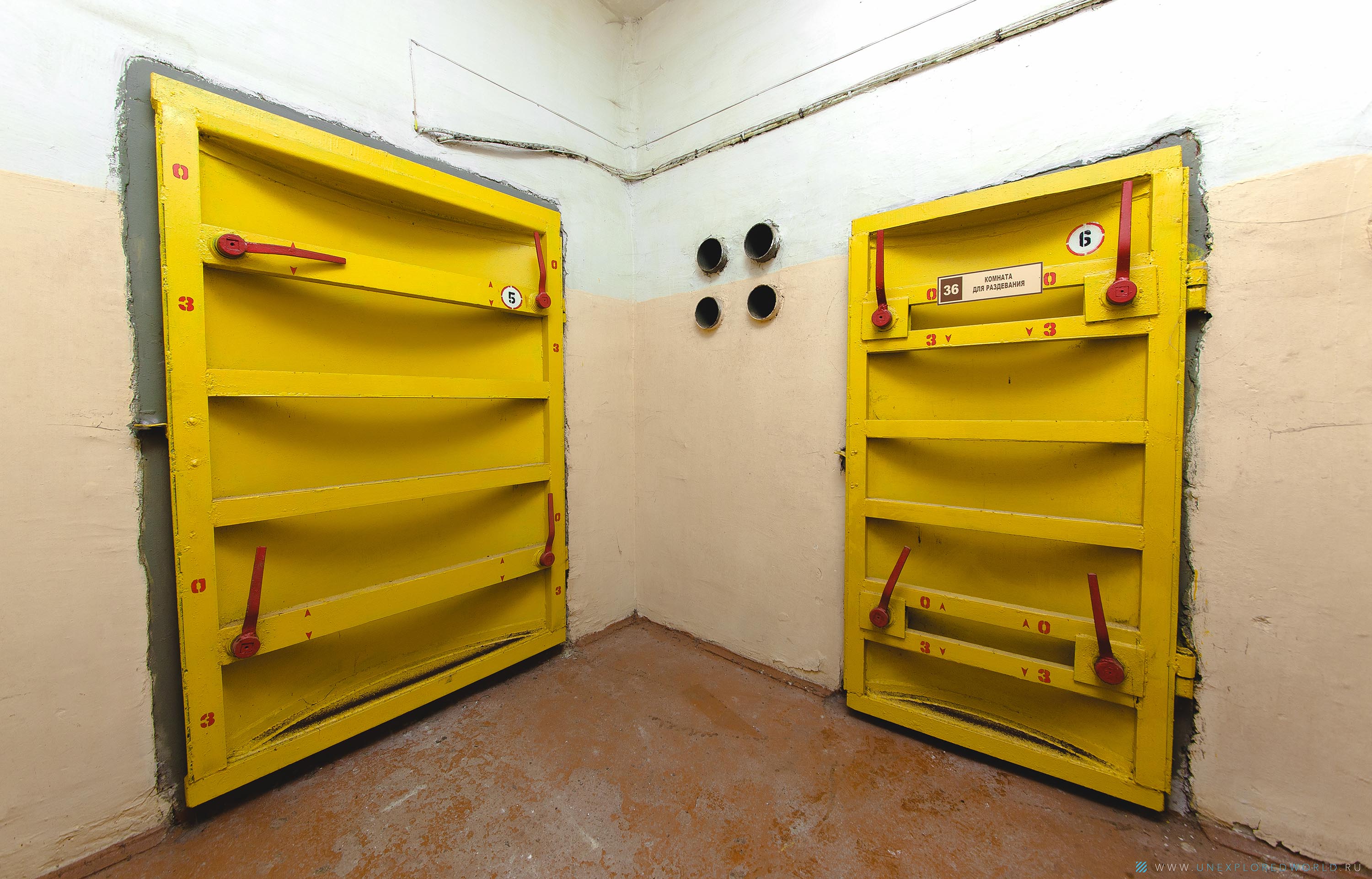
Fifth hermetic door on the other side:

The sixth hermetic door from the fourth vestibule:
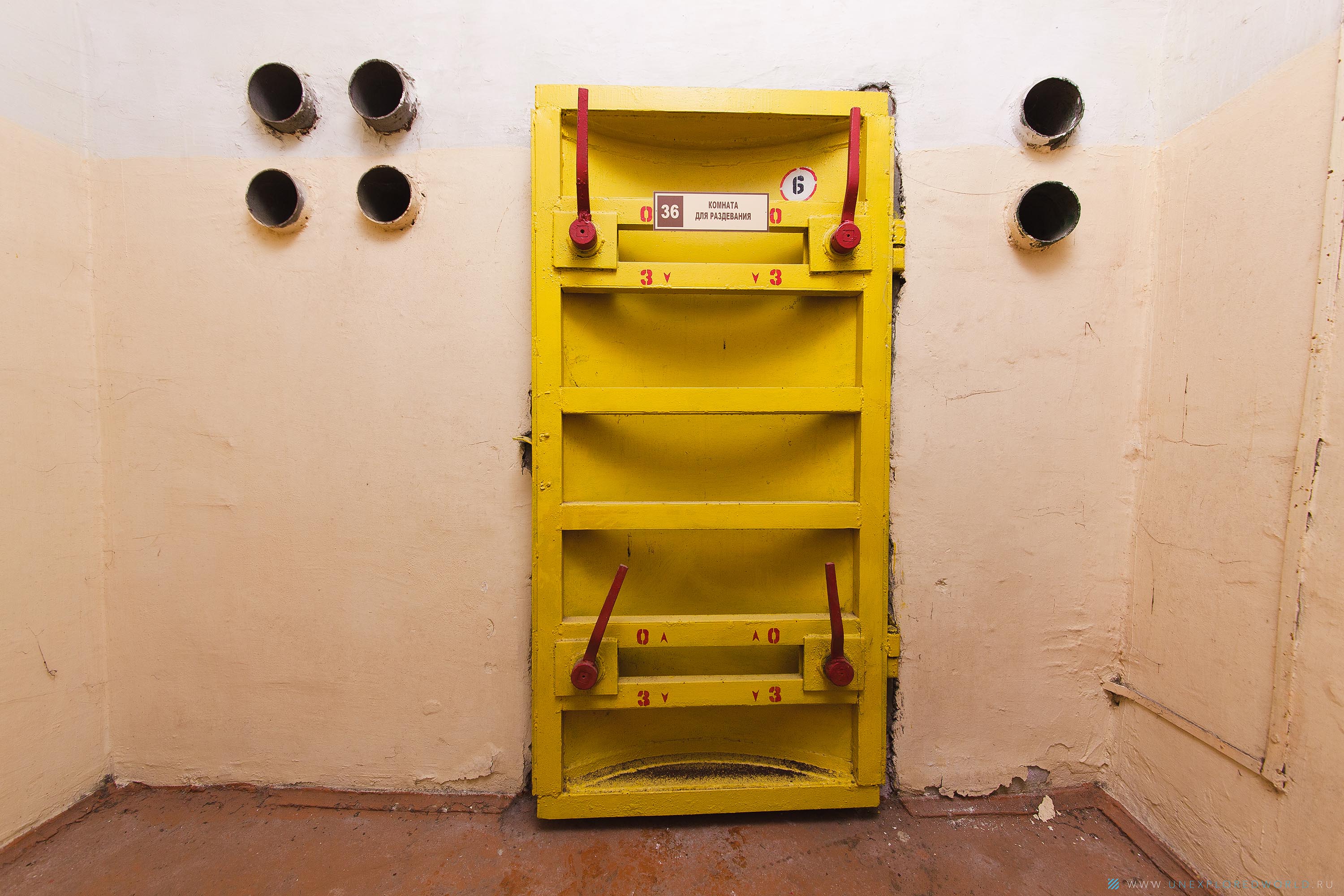
Sixth pressurized door, view from the undressing room (vestibule room):
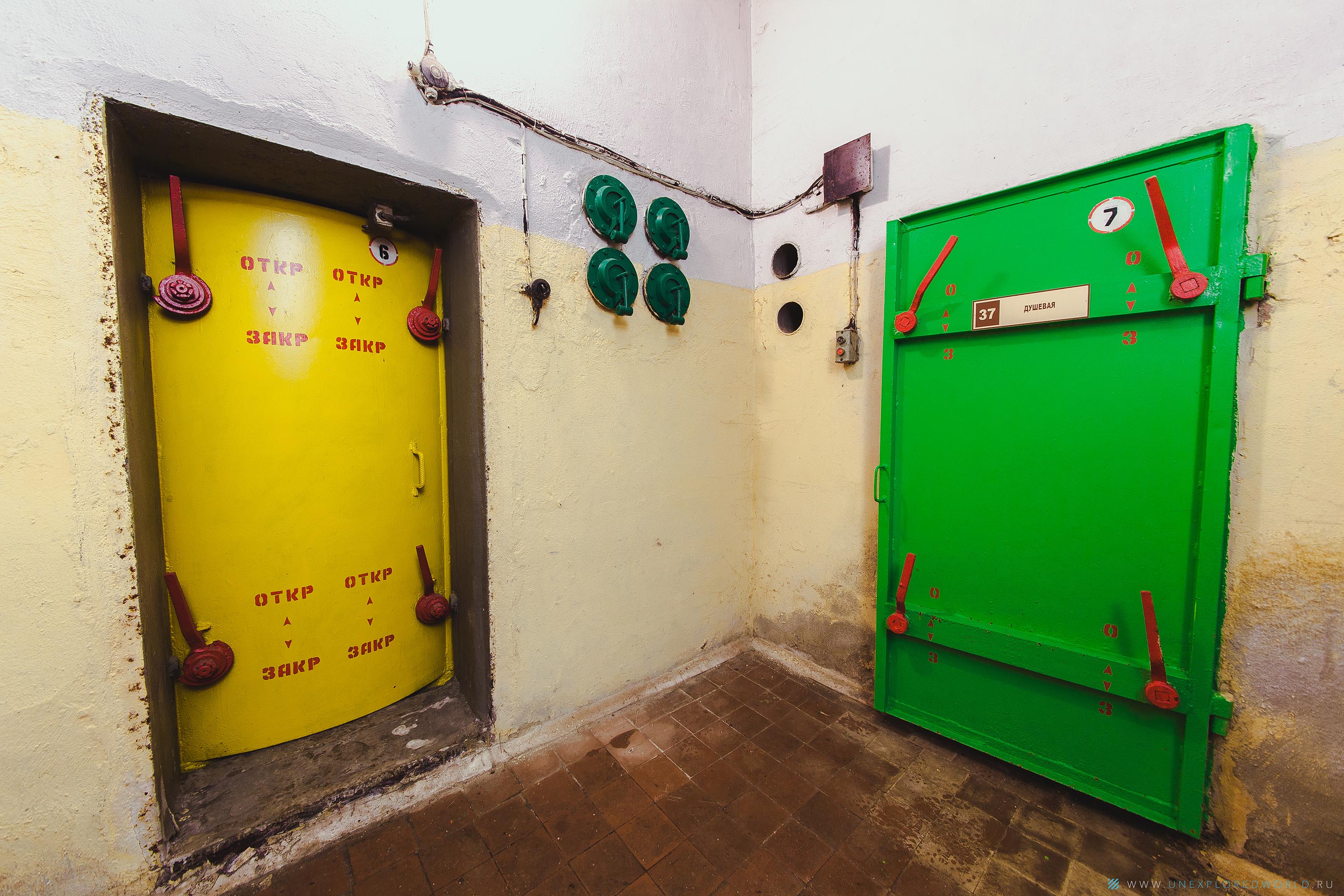
Further, according to the plan, a shower room, also a vestibule:
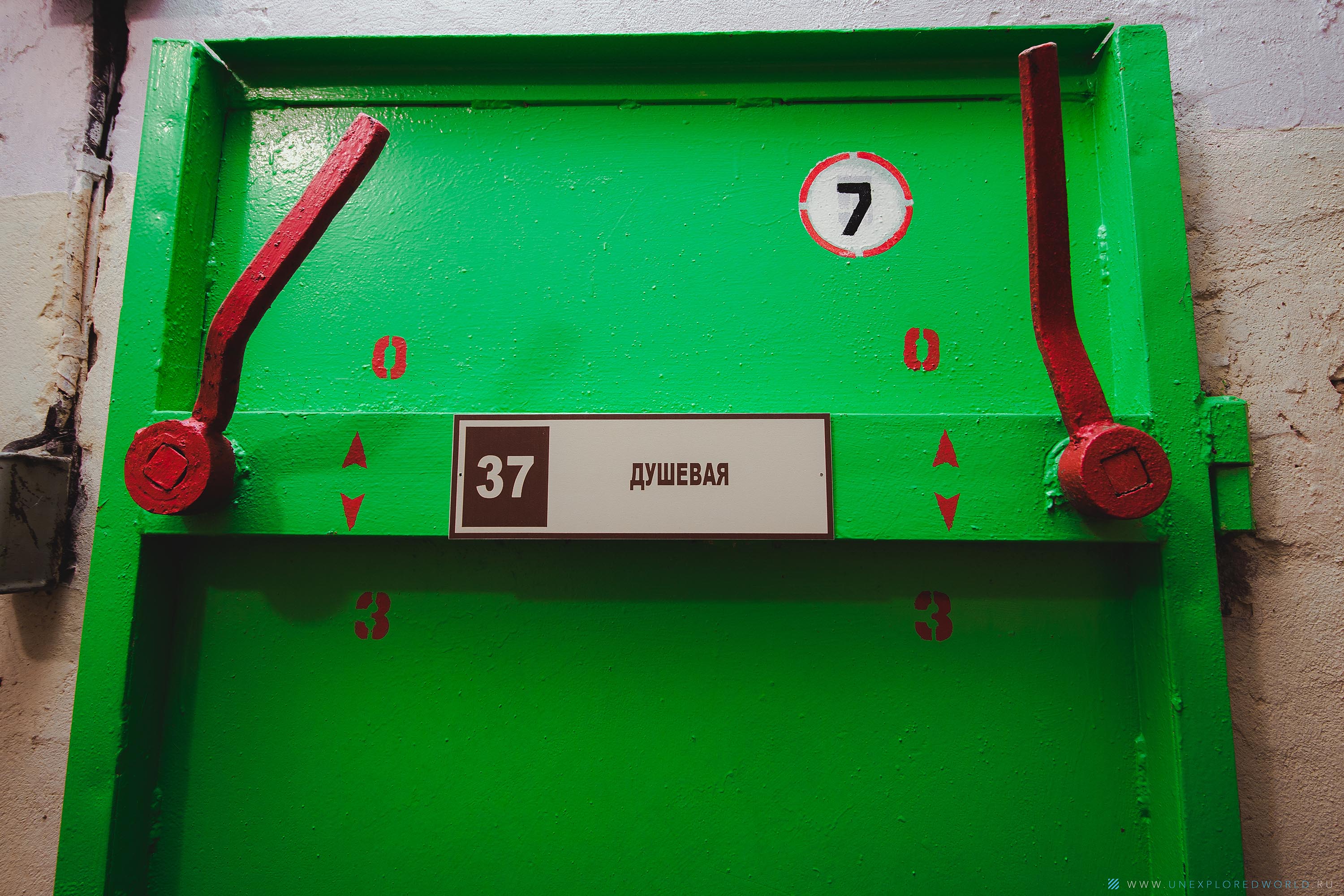

And the last room, already directly related to the object, is the dressing room:
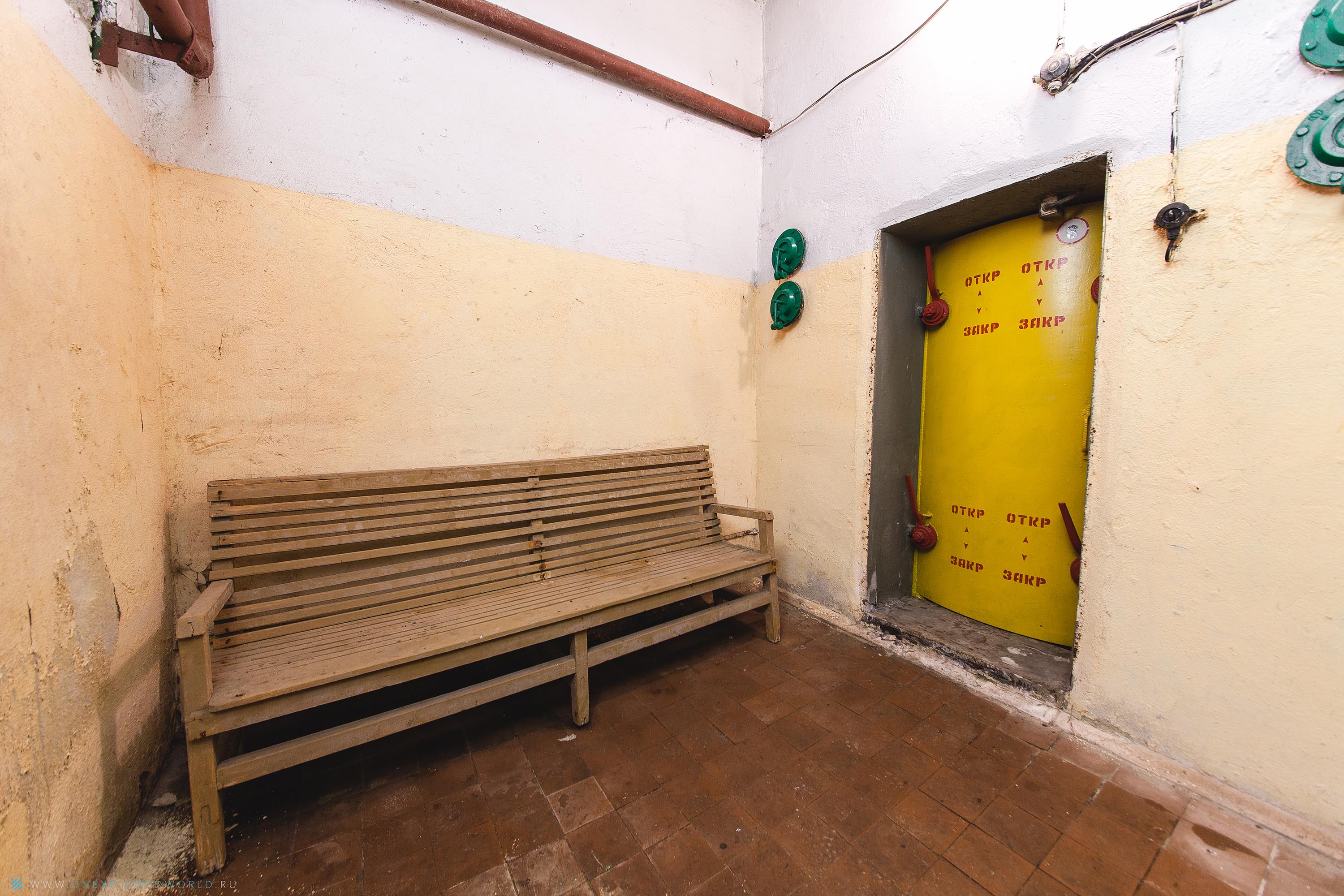
Having finished the inspection of the engineering block of the object, we will proceed to the technical one, and then we will smoothly move on to the residential one.
Utility room:
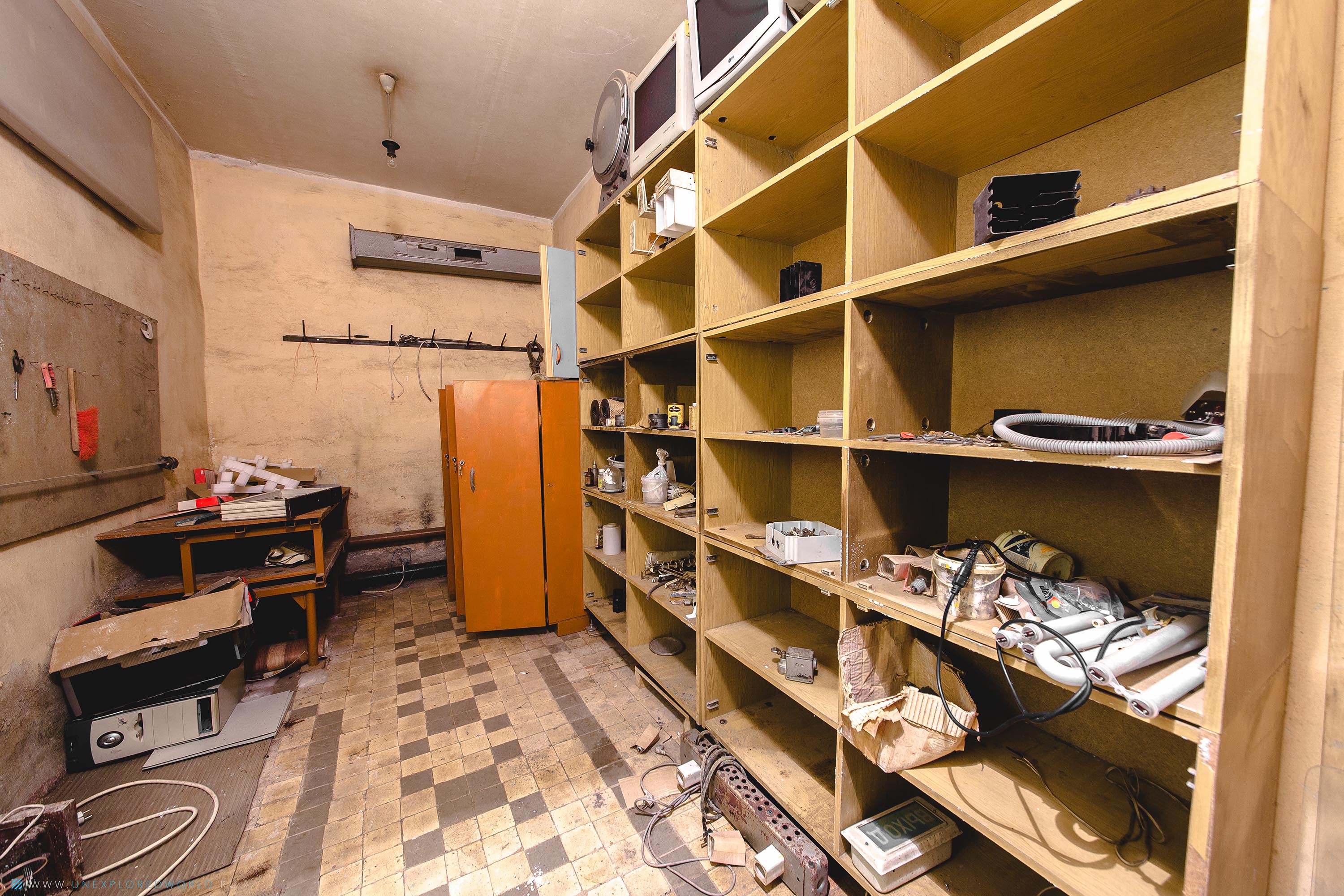
Medical office:

In addition to the diesel generator room, the facility has one more room, separated from the common block by a hermetic door. Since this room does not pose any danger to people (unlike a diesel generator, or, in another exotic case - isotope storage), the conclusion immediately suggests itself: the lives of human ministers are much less important than what is behind this door. And what is there?
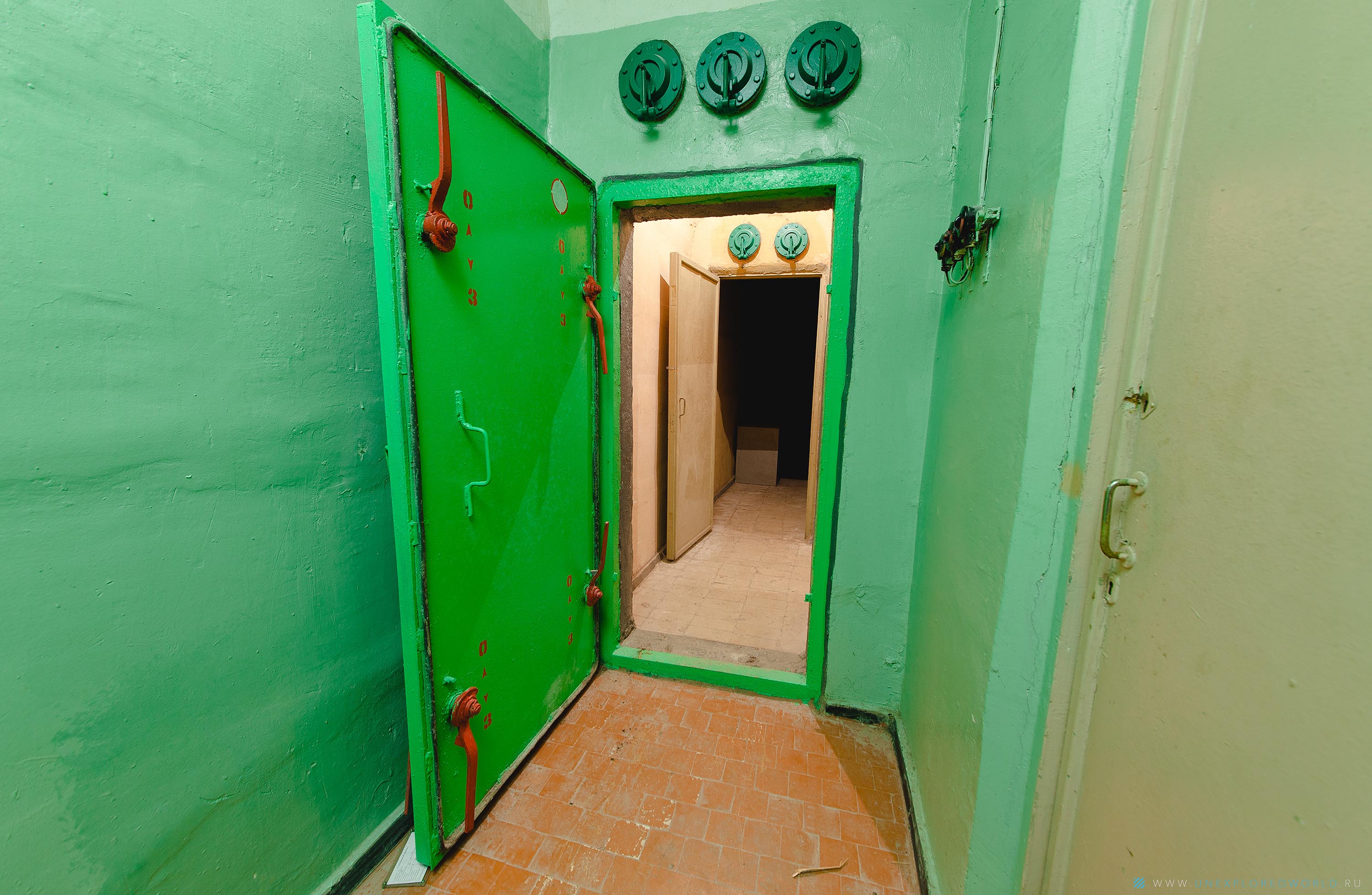
Surely! Safes. Only safes are not easy. It was in them that the answers to the exam were to be stored. Joke. If you look closely at the lower right corner, you can see interesting inscriptions. And if you trust the scheme of the object, we are in the department for the protection of state secrets.
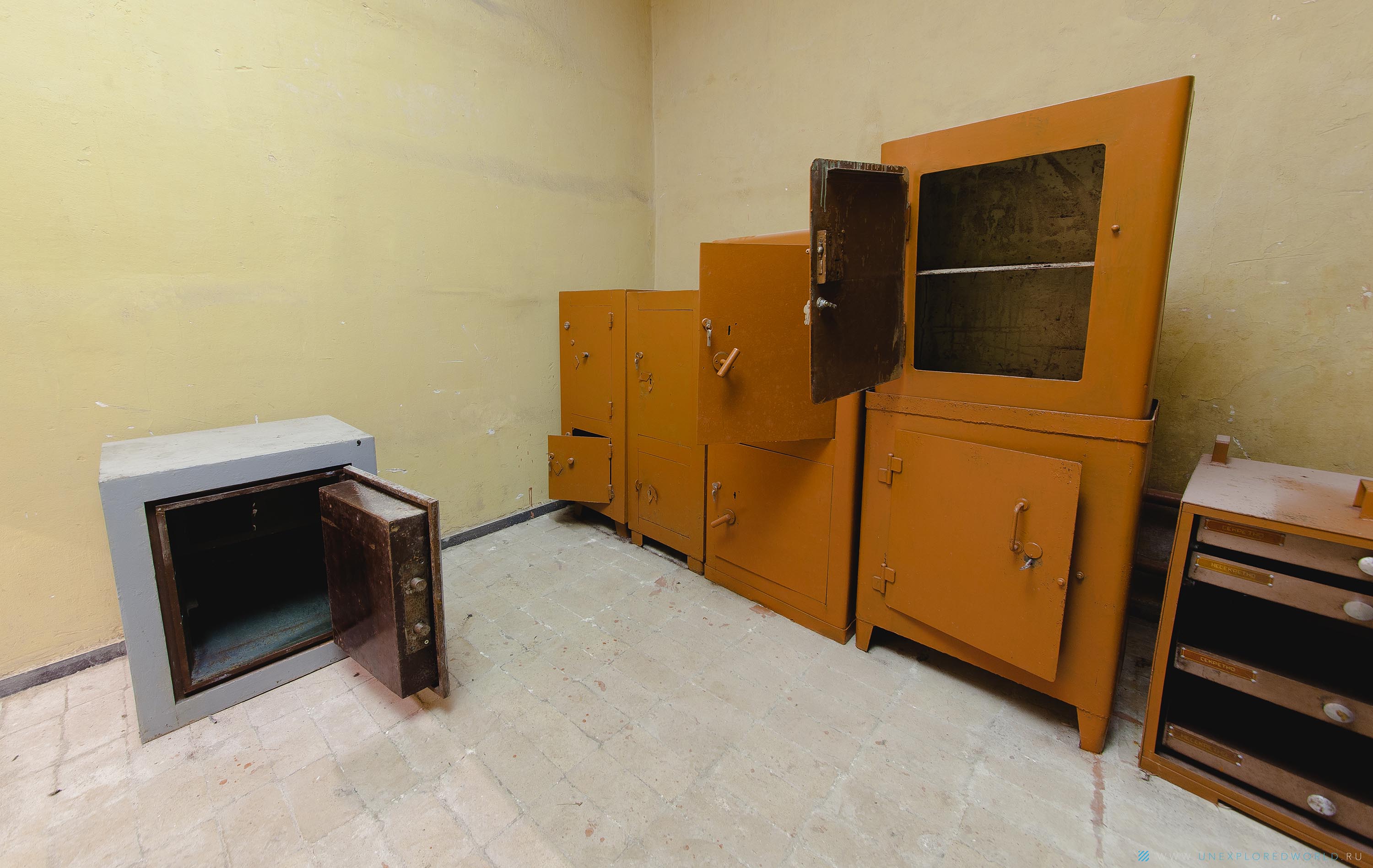
But the communication center and special communications did not receive a separate sealed door.
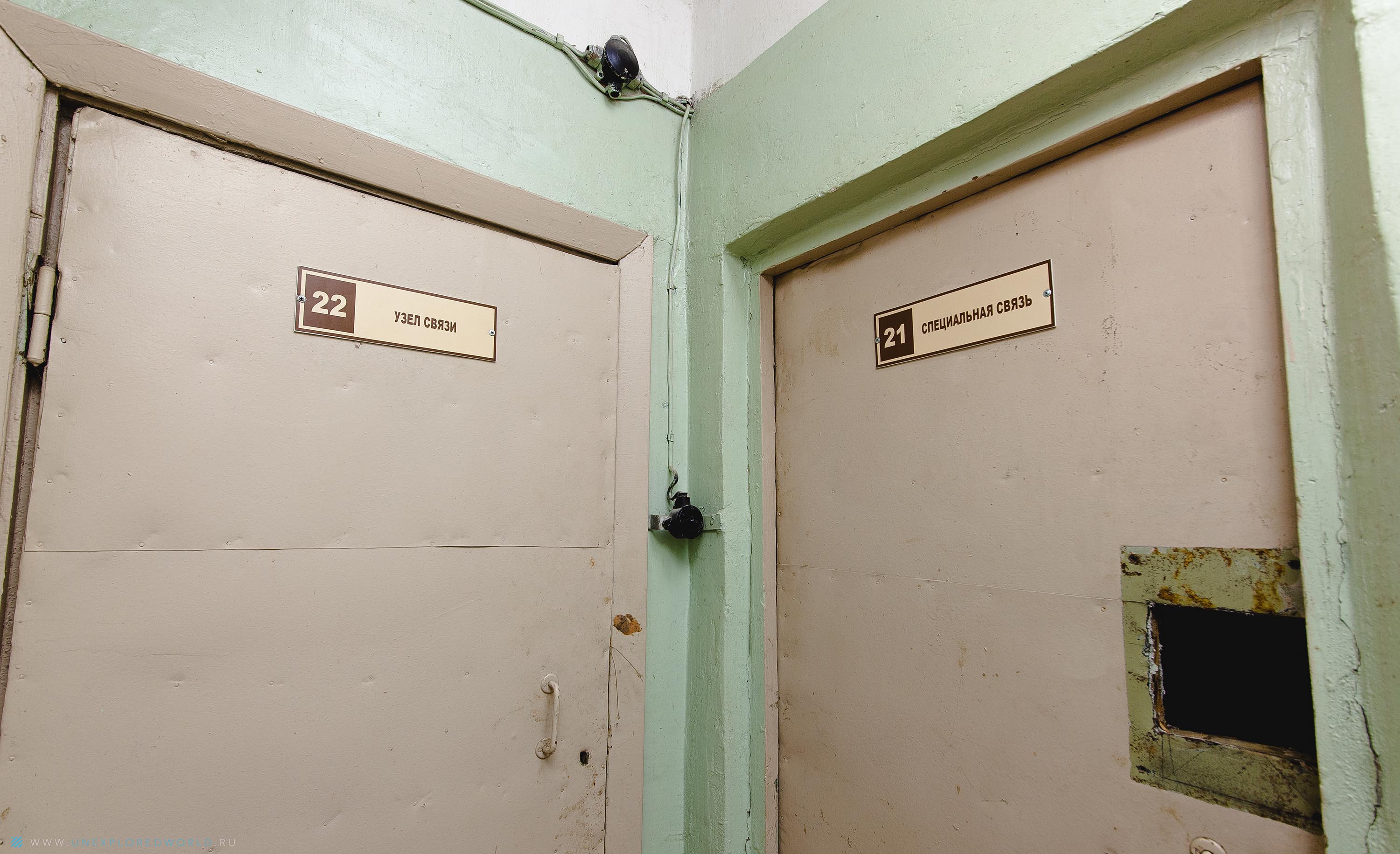
Spoiler alert: a communication center is a meter by meter room, into which cables are wound directly from the wall. Everything. And special communications are three chairs and two wardrobes. Here is such a special connection.


A real Soviet canteen deserves special attention in the facility! Usually these can be found in pioneer camps, but not underground. Unusual!

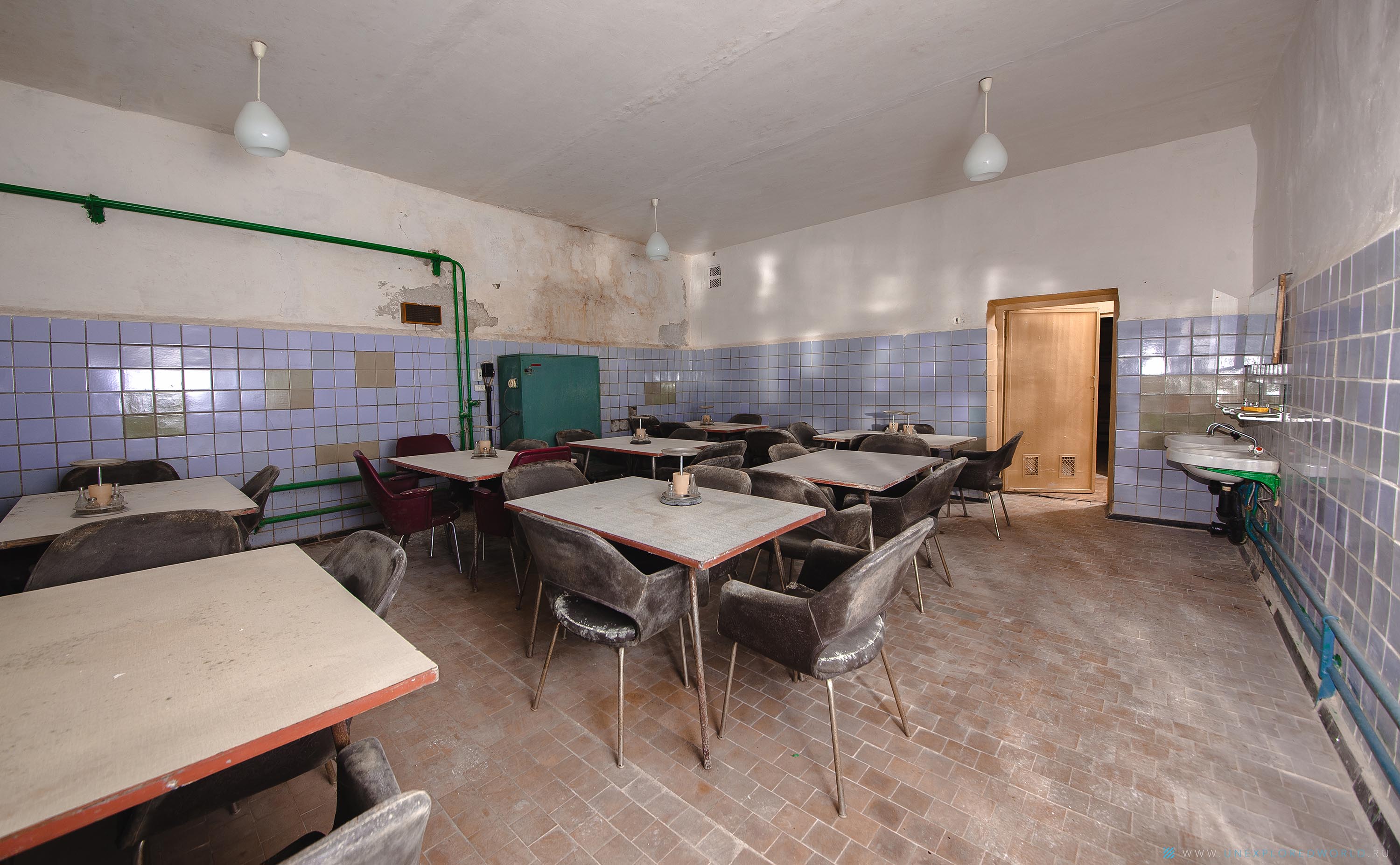
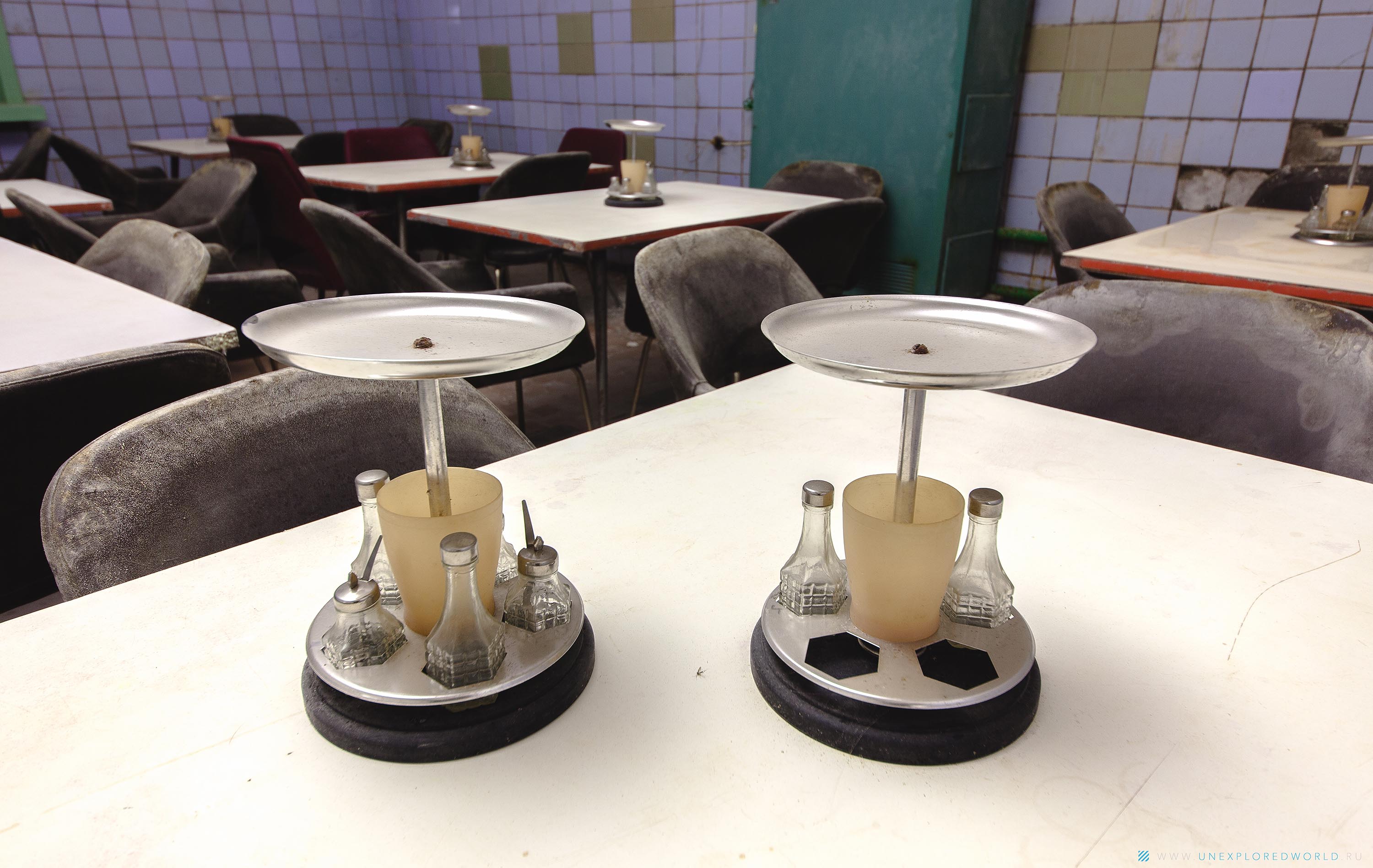
Power delivery window:

On the other side is the catering unit

Now let's move on to inspecting the main block of the object.

Most of the premises are rest rooms. In terms of its content, it is somewhere between an average hostel and a detention cell.
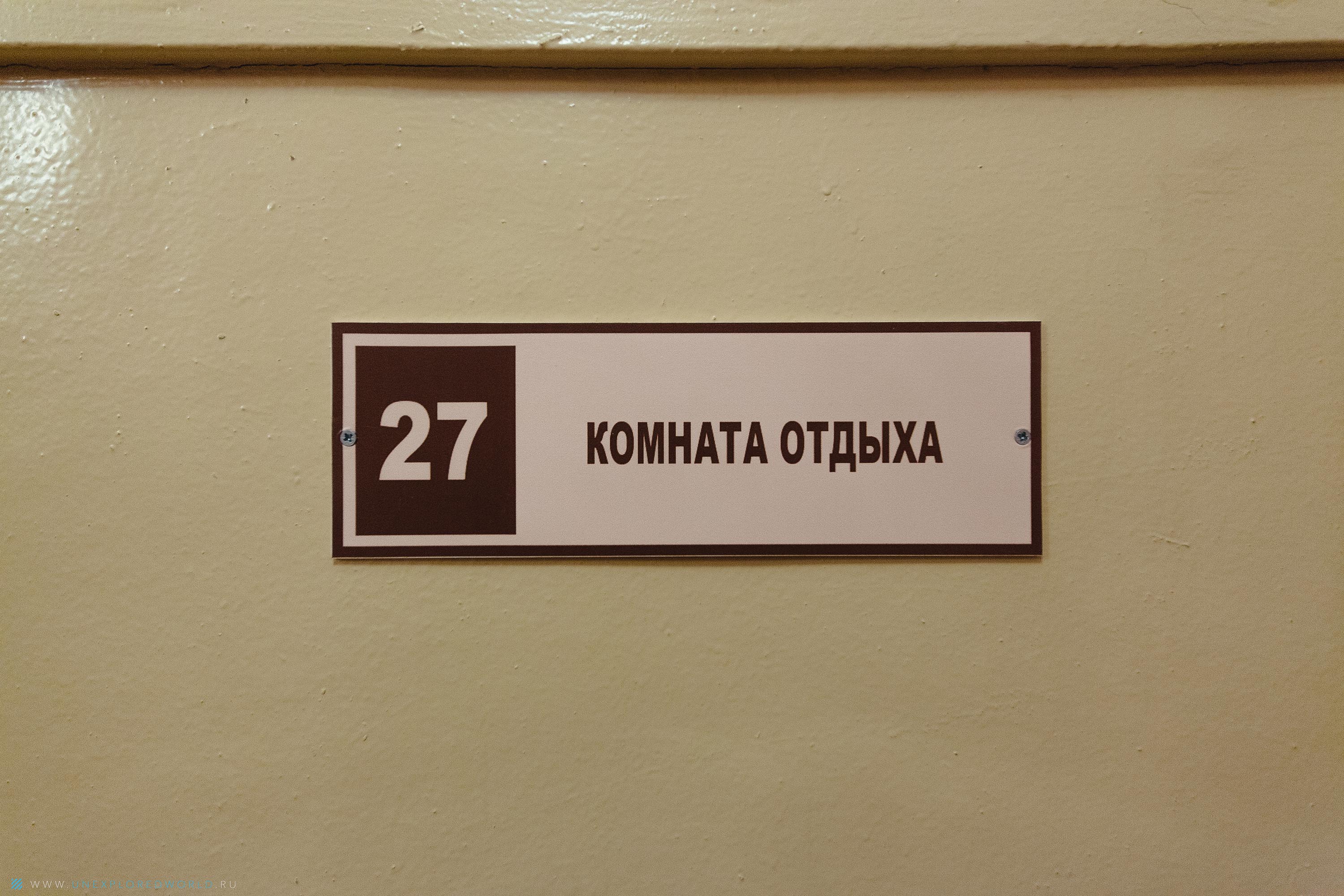
There are lounges for every taste and color. For example, a tight little blue one:
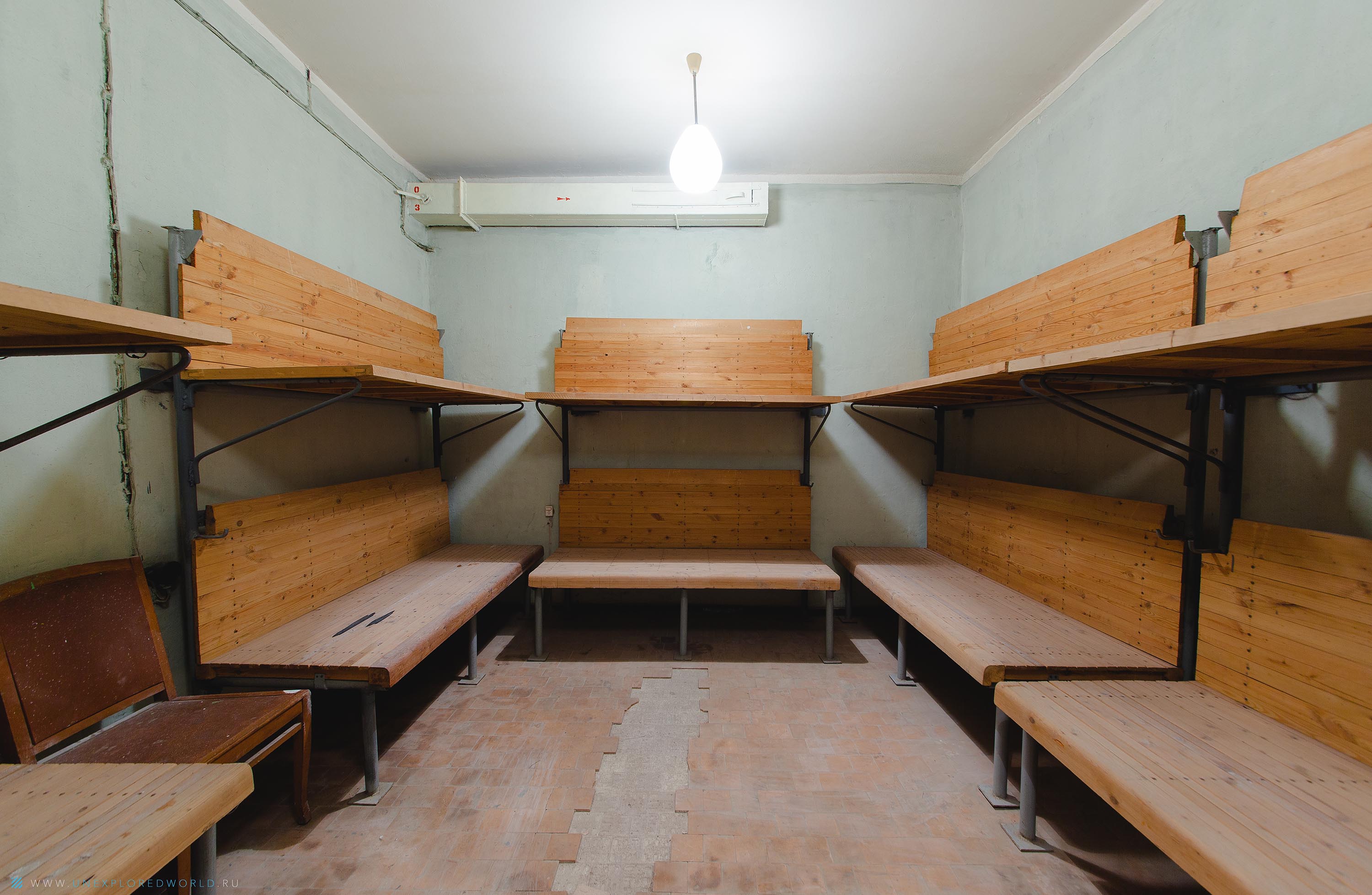
And this is a gentle rosy one for the female part of the staff:
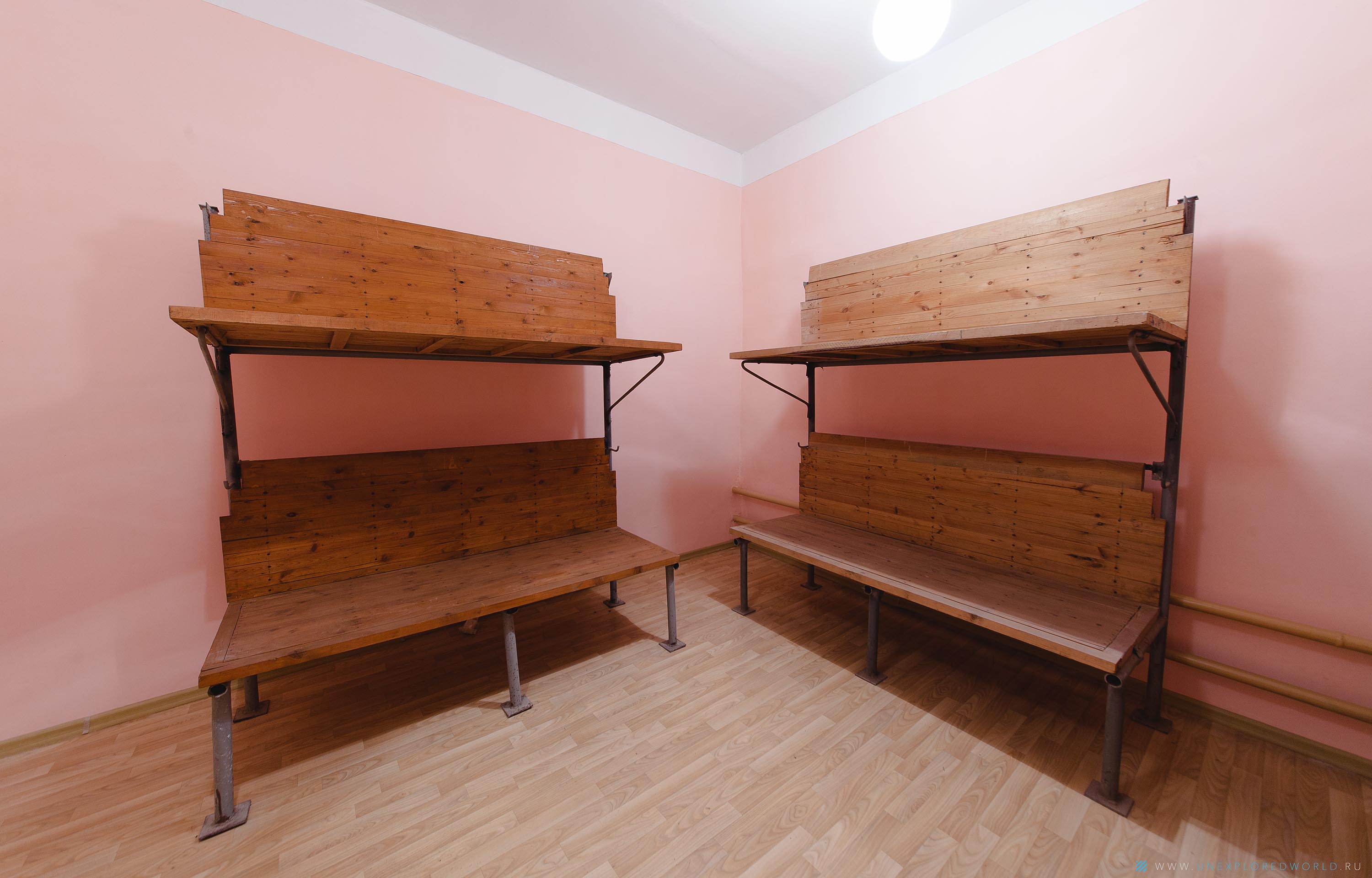
Or this creamy unfinished one:

Contrary to popular opinion, ministers should not only rest, but also work:

Therefore, all the necessary conditions for comfortable work have been created in the bunker:
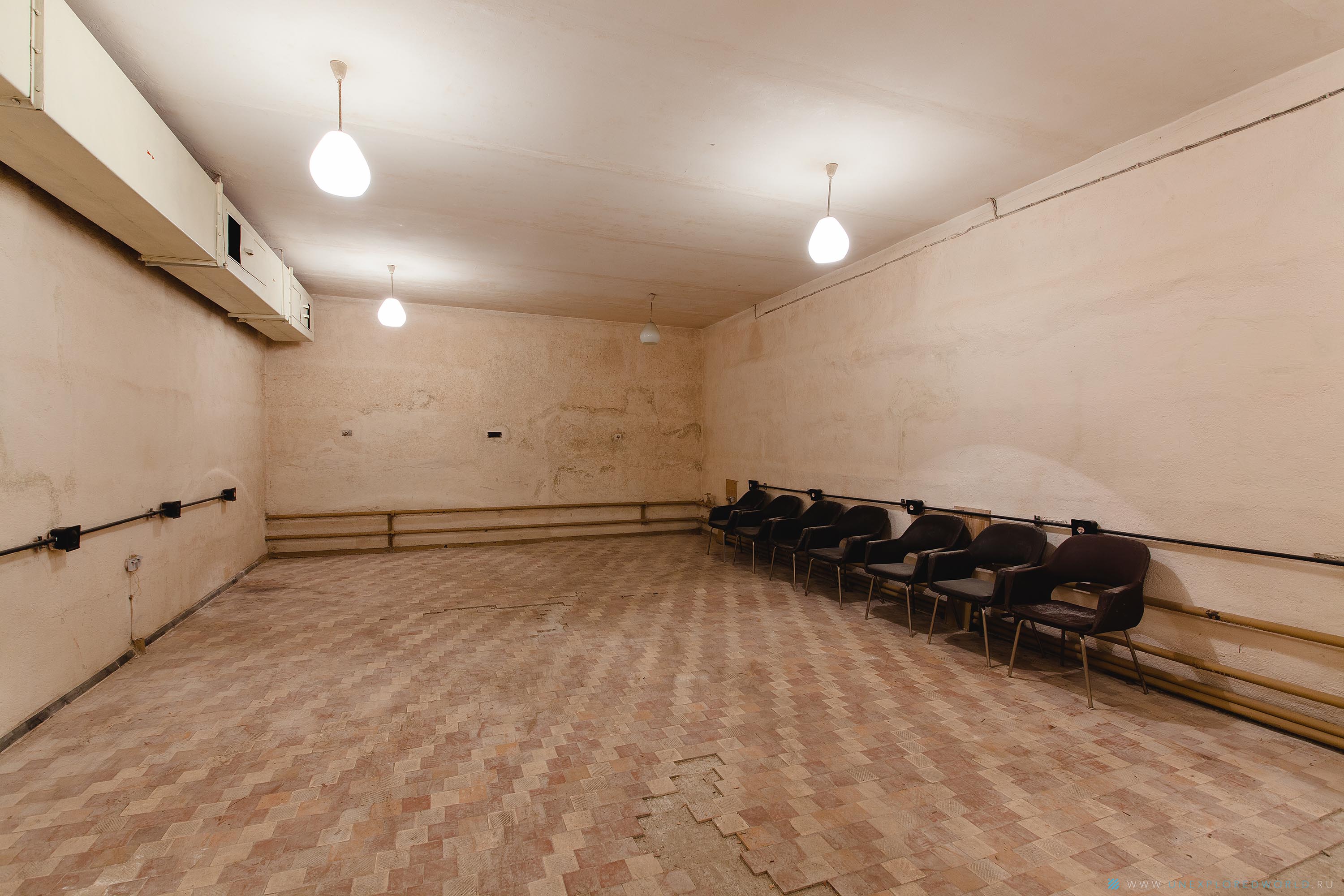
A joke, of course. The offices here are completely different. There are such:

And such:
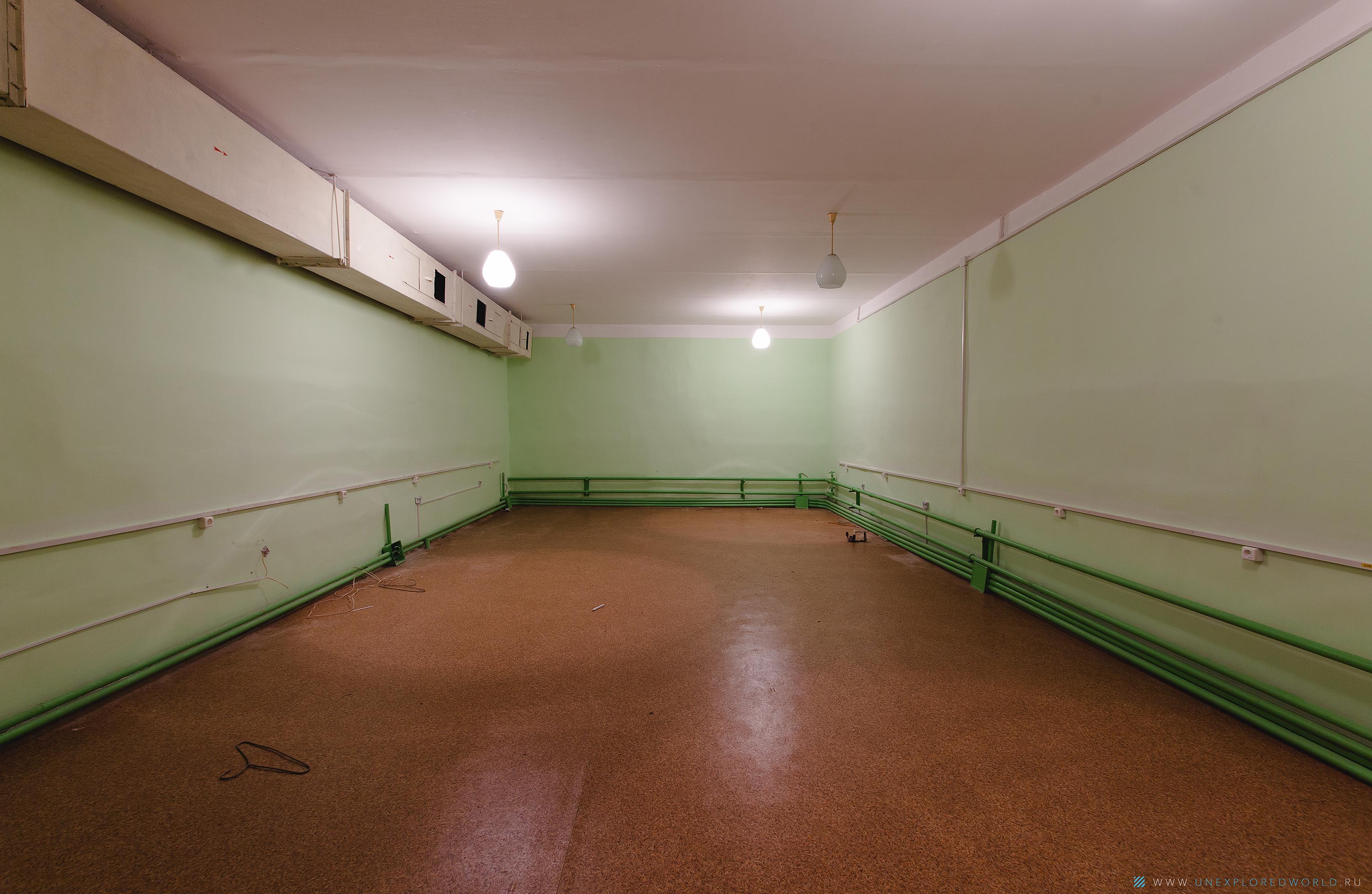
This is quite a study:

And even this: a kind of Soviet open space:
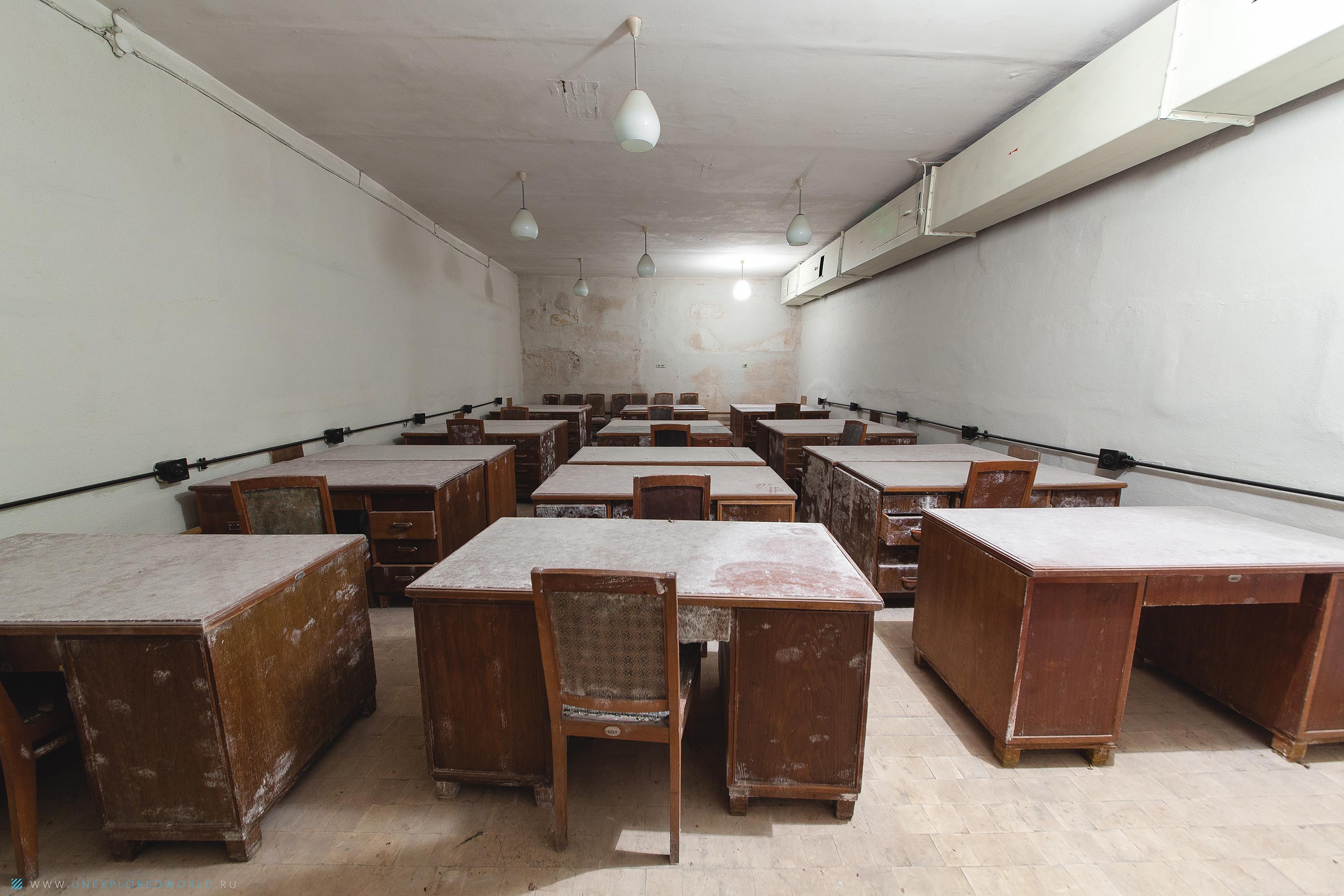
But the most interesting office was made for those who hold higher positions. The tables are upholstered in neat green fabric, and the shelves are stamped with the house of the Council of Ministers.
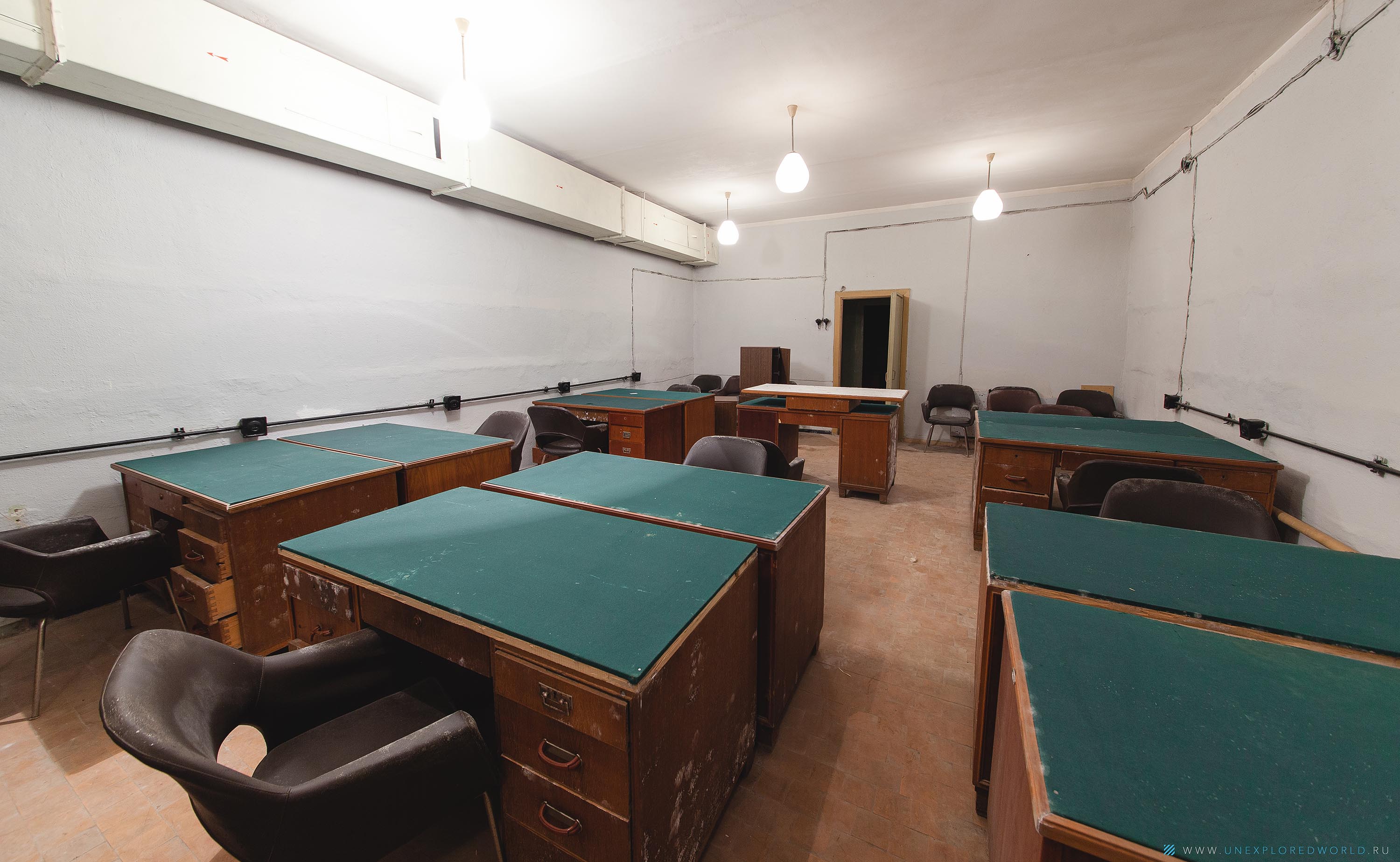


But we're not in a simple bunker, are we? Want to see what a minister's office looks like? What a question, of course you want!

Meet, ahaha, the cabinet of the minister:

But so that the minister does not get bored in such a well-thought-out study, there is reading on the couch. And even in my specialty! Directory of addresses and telephones of Russian universities. But you can sleep comfortably, and not on wooden hostel-style shelves, like everyone else in this bunker.

The dressing room of the office is also quite minimalistic - one wardrobe and one safe:
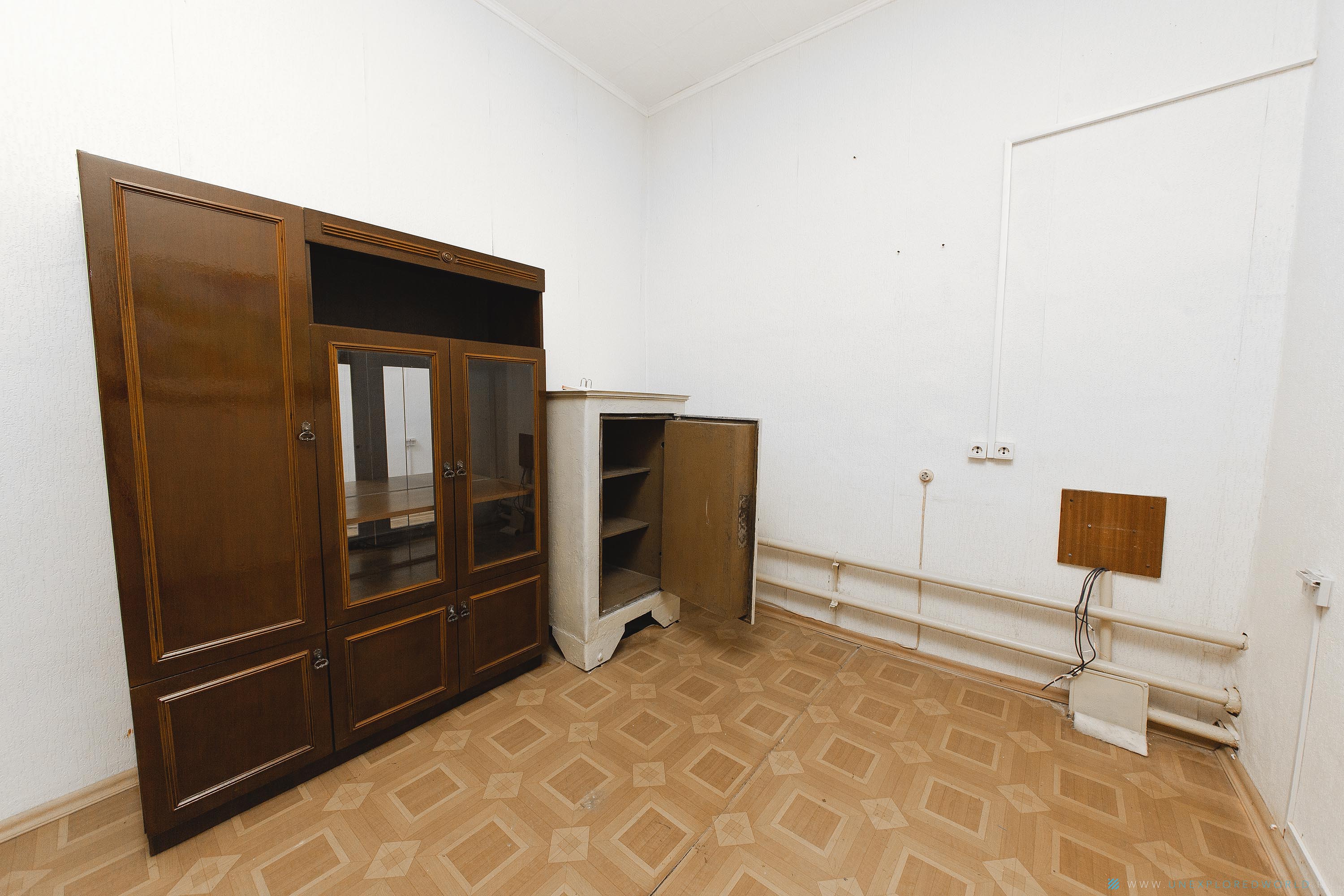
But if you are neighing at the decoration of the cabinet of the minister, let's move on to the cabinet of the deputy minister. It's still more minimalistic here.
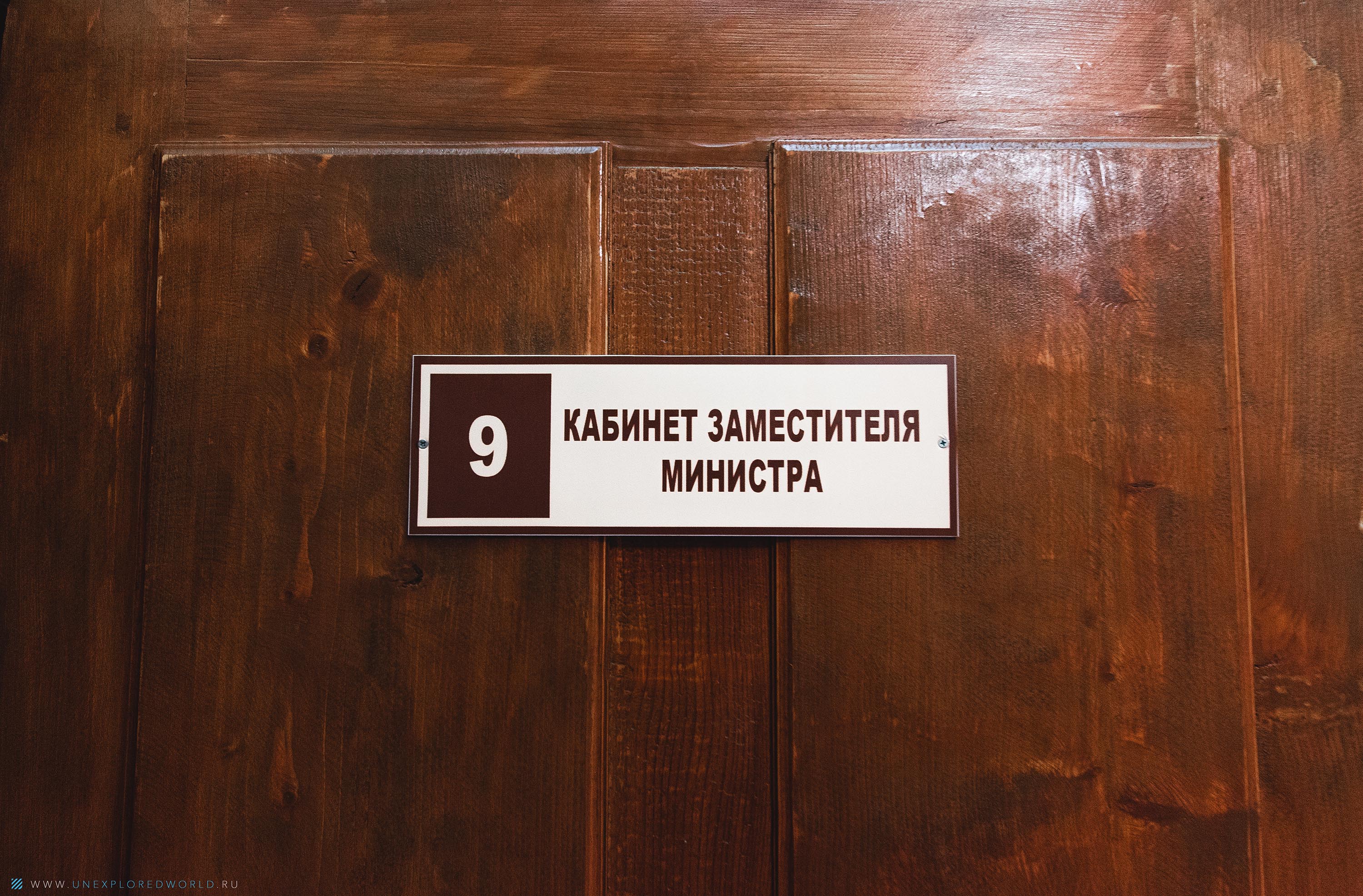
In a narrow room of 2x2 meters they tried to fit all the essentials, and not just fit, but to do it as tastefully as possible: a folding sofa, a coat rack, a safe and all the same university directory - is flaunting on the safe. No, well, what else do you need?
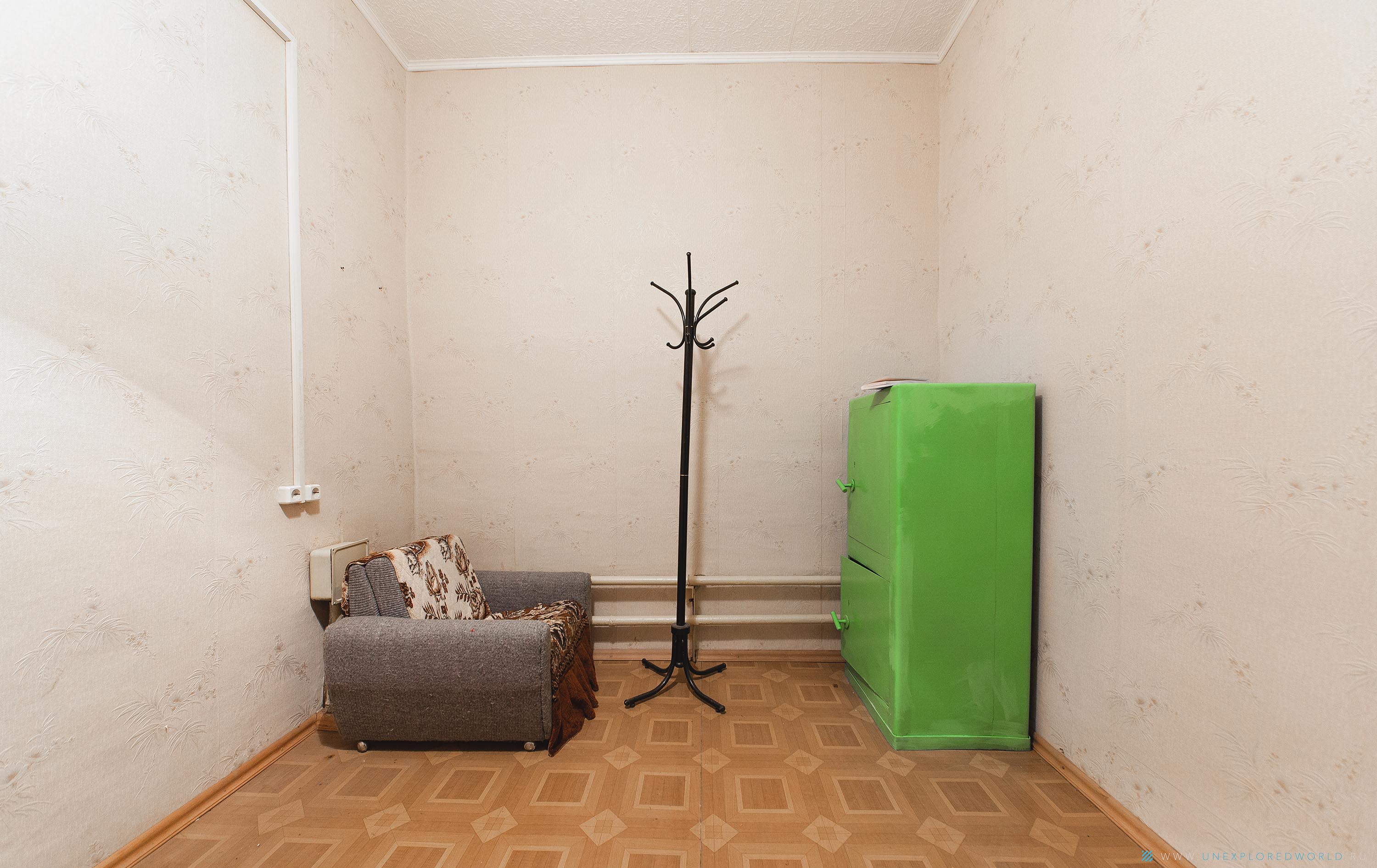
After inspecting, it seems, all the rooms except the toilet, the author of the post sighed languidly and went to the surface. Despite being empty, the place turned out to be quite atmospheric.
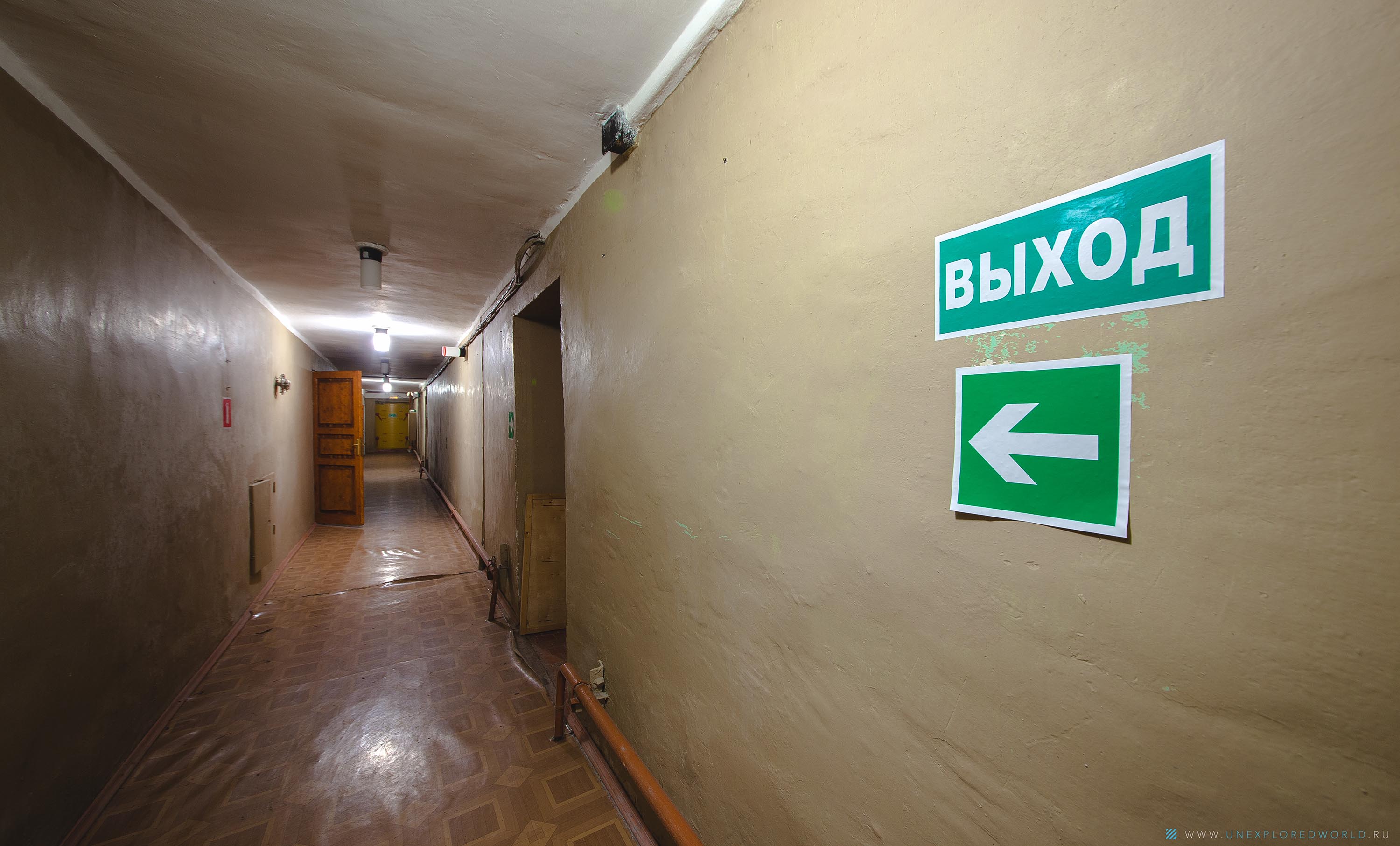
That's all. Thank you for the attention! Yours sincerely, Unexplored World Team.
Subscribe to us on social networks and be the first to know about new reports!
2 Responses
Thanks, very interesting. It is a pity that the toilet was not visited after all.
предполагаю, что объект охраняется и вход туда с сопровождением и заранее обговаривать надо? или же просто можно пройти?